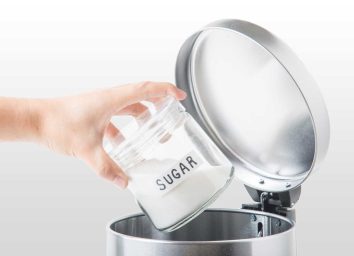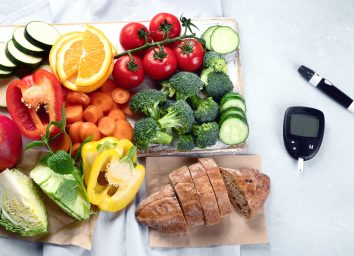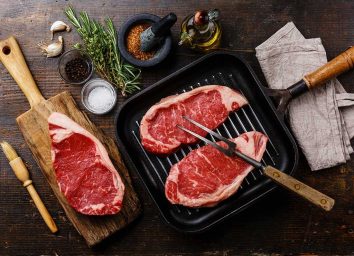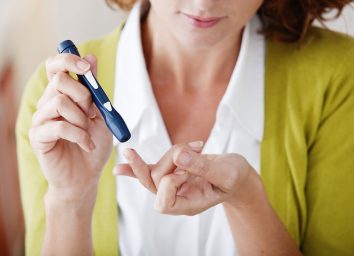50 Worst Foods for Diabetes
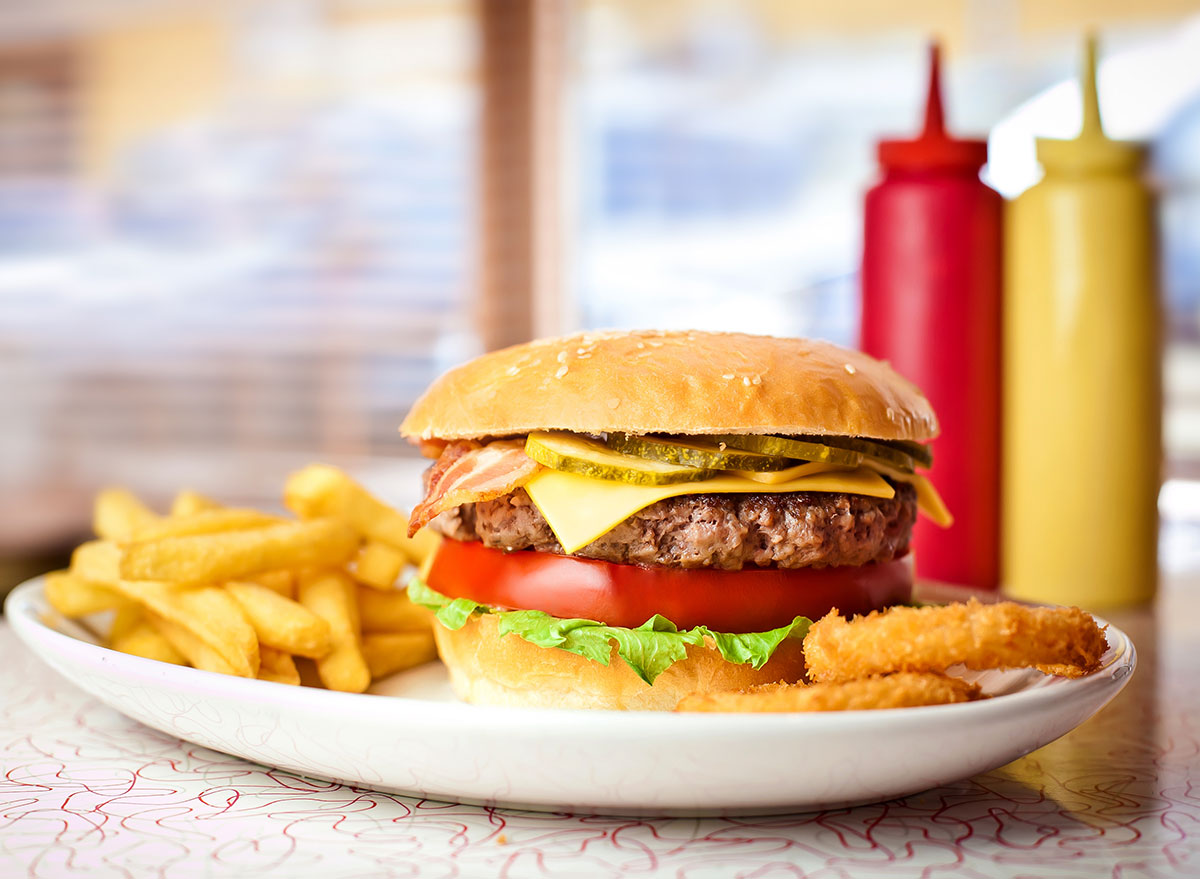
Controlling your diabetes requires a careful balance of lifestyle habits, including eating right, exercising, and taking your proper medication. But it can be tricky to navigate proper nutrition, especially with foods that sound healthy but can actually wreak havoc on your blood sugar and overall health (such as some of the below foods diabetics should avoid).
In fact, diabetics are two to four times more likely than people without diabetes to die of heart disease or experience a life-threatening stroke, according to the American Heart Association. It's even more dangerous for those who don't control their diabetes; it can lead to heart disease, nerve damage, and kidney disease.
To stay on track, be sure to avoid these 50 foods that will spike your blood sugar and lead to chronic inflammation. Luckily, life with diabetes doesn't have to be flavor free. "After working with thousands of diabetic individuals over the years, I noticed that many asked me the same question at their first appointment. 'Can I still eat my favorite foods?'" says Lori Zanini, RD, CDE, author of Eat What You Love Diabetes Cookbook. "And the answer from me was always 'Yes!' It's the portion sizes and frequency that makes the most difference, in addition to how the food is prepared."
As always, be sure to consult with your doctor, registered dietitian, or certified diabetes educator before making any drastic changes to your diet. Some of these recommendations may change if you are suffering from low blood sugar. If you're looking for what you can enjoy, be sure to stock up on the best foods for diabetes, and try out these 21 Best Healthy Cooking Hacks of All Time.
Fruit Smoothies
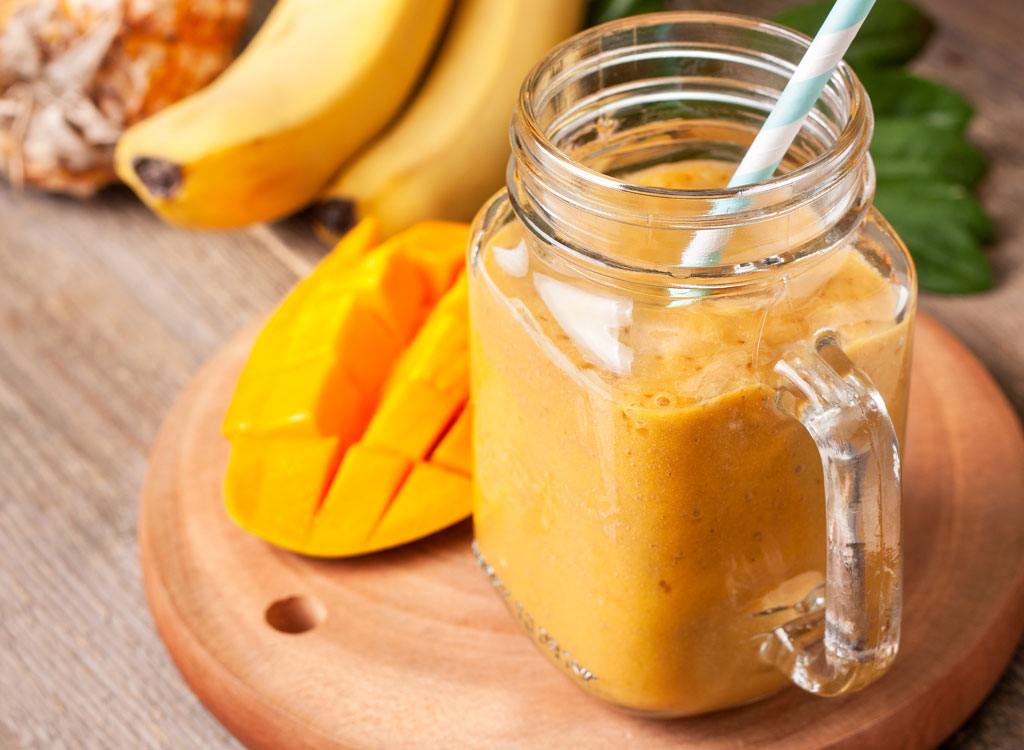
Sure, it seems healthy, but a pulverized, low-fiber smoothie made primarily of fruit tops our list of foods diabetics should avoid. "Smoothies can be large whacks of carbs and sugar, especially if there's no protein or healthy fat that acts similarly to fiber to slow digestion and prevent blood sugar from spiking," says Isabel Smith, MS, RD, CDN.
White Bread
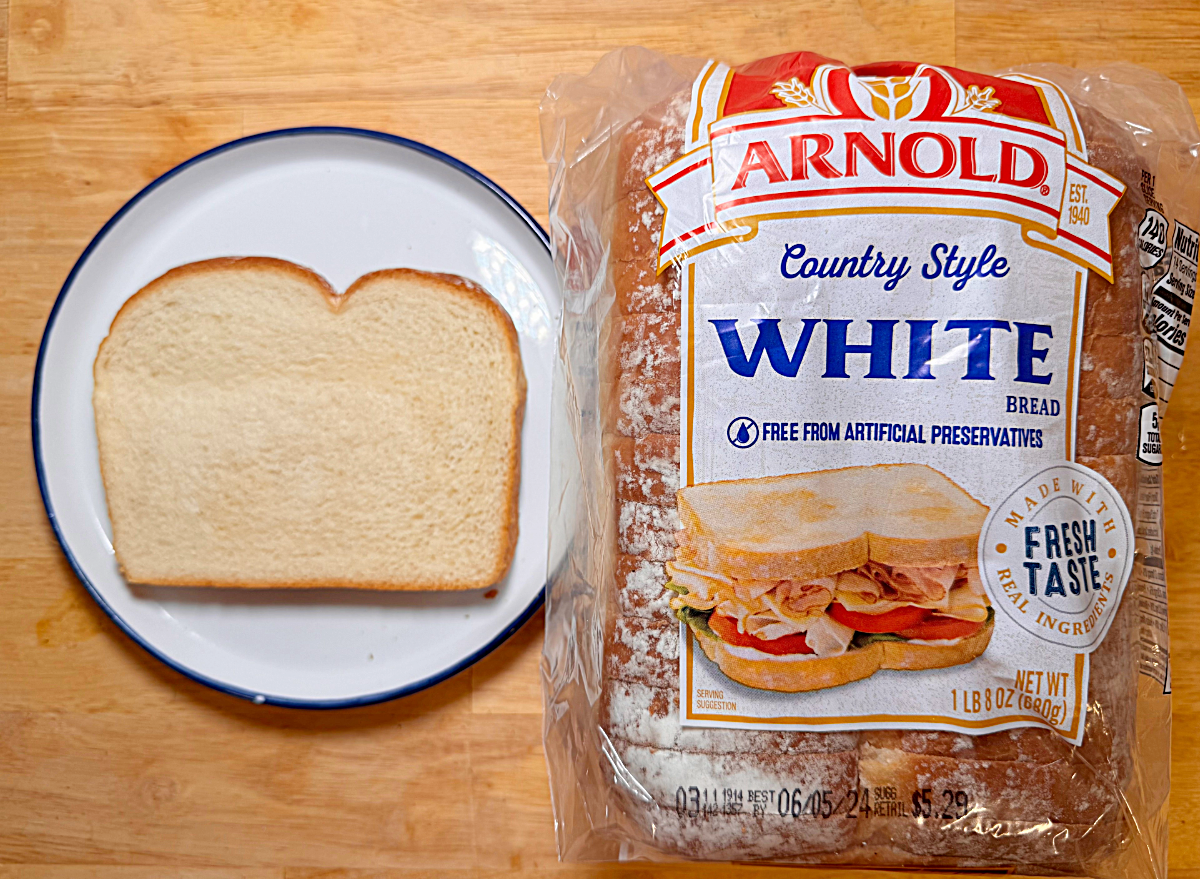
You can have bread, but just not the white kind, says Lori Zanini, RD, CDE. "White sandwich bread is a refined grain, not a whole grain. When eaten as is, it has a high glycemic index and can directly lead to elevated blood-sugar levels." Swap white bread for whole grain or Ezekiel bread.
Char-Grilled Meats
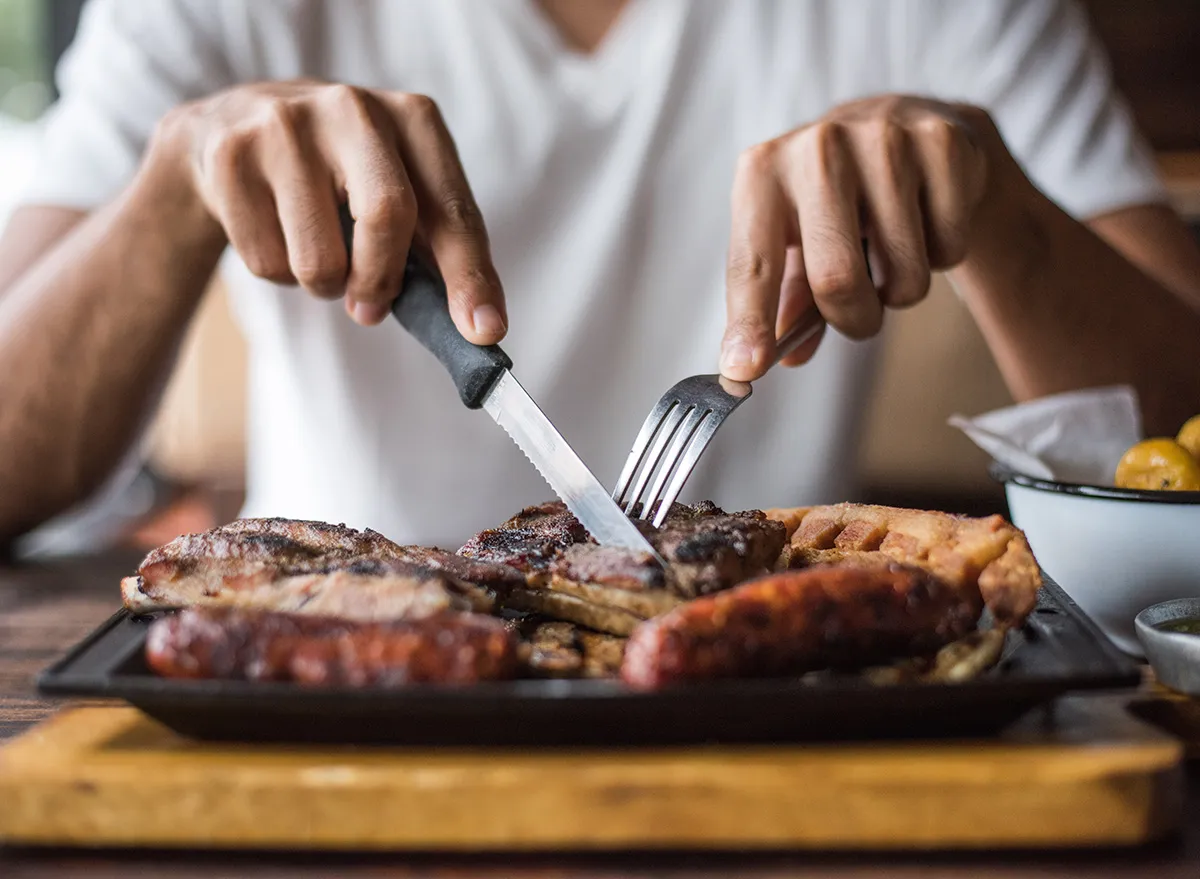
"They may be tasty come summer, but char-grilled, burnt meats are high in advanced glycation end products (AGEs), which perpetuate damaged cell receptors and causes insulin resistance," cautions Miriam Jacobson, MS, RD, CNS, CDN. A little bit of char is inevitable when you're grilling, but if any parts are extremely blackened, cut them off before digging in, the American Diabetes Association advises.
Country-Fried Steak
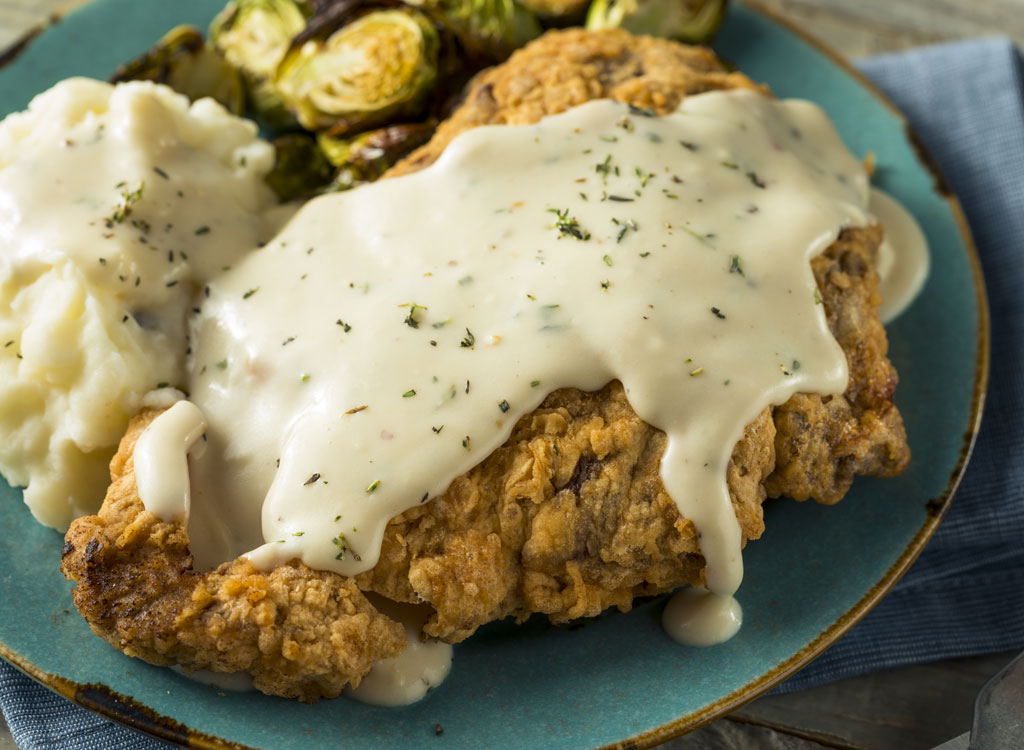
Made with tenderized cube steak and white flour, this pan-fried Southern dish is one you're better off skipping, Newgent warns. "The combination of high-fat meat coupled with a starchy breading makes this a double-whammy of bad news for folks with diabetes, especially as it relates to their heart health."
French Fries
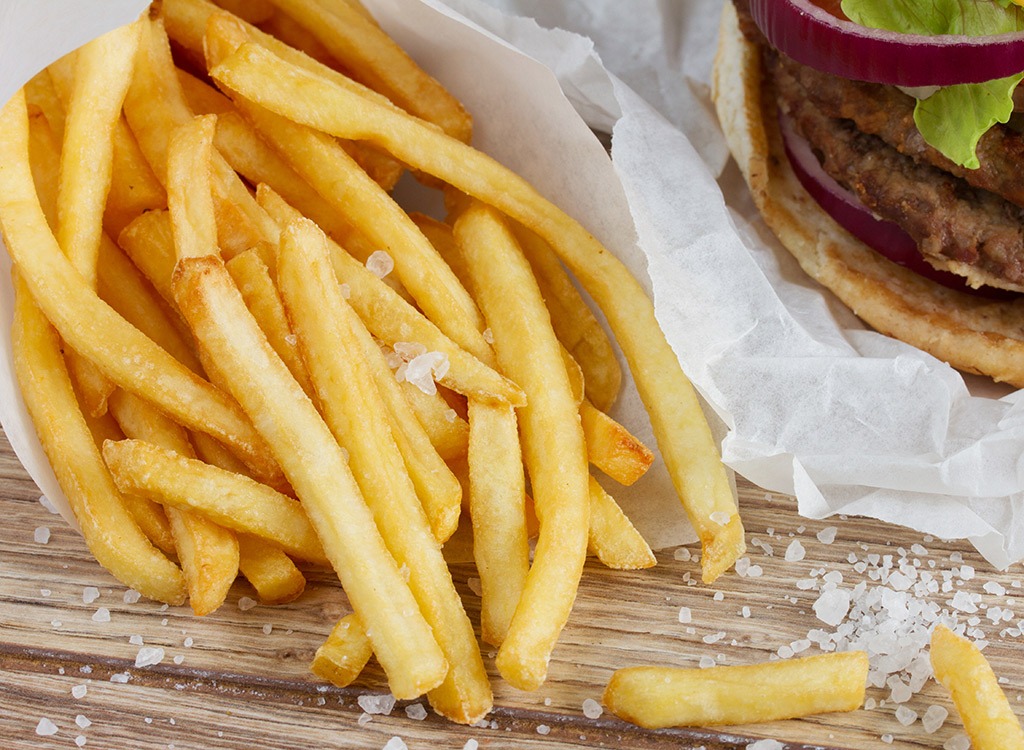
It's not that you can't eat potatoes, you just have to be cognizant of how they're prepared and how much you consume. French fries, for example, are a no-go. "Fried foods are high in simple carbs and fat, which is a tough combination for diabetics. It will raise blood sugar quickly and keep it high for a long time because the fat takes a while to digest," Zanini explains.
Shortening
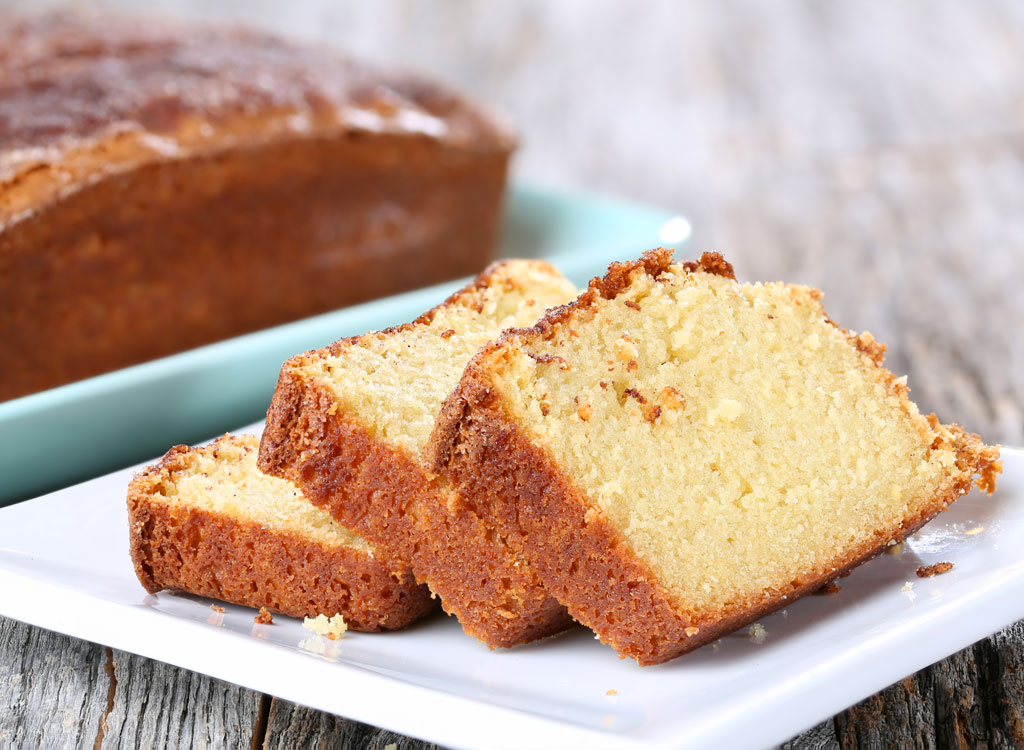
According to the American Diabetes Association, people with diabetes are at high risk for heart attack and stroke. One of the easiest ways to keep yourself safe is to limit your saturated fat intake. Things like lard, palm oil, and high-fat meats and dairy products should all be consumed in moderation. When buying packaged goods, look for hydrogenated oils on the ingredient label. If you see it listed, that means there's trans fat in the product (even if it claims "0 g trans fat"), and it's best to put it back on the shelf.
Sports Drinks
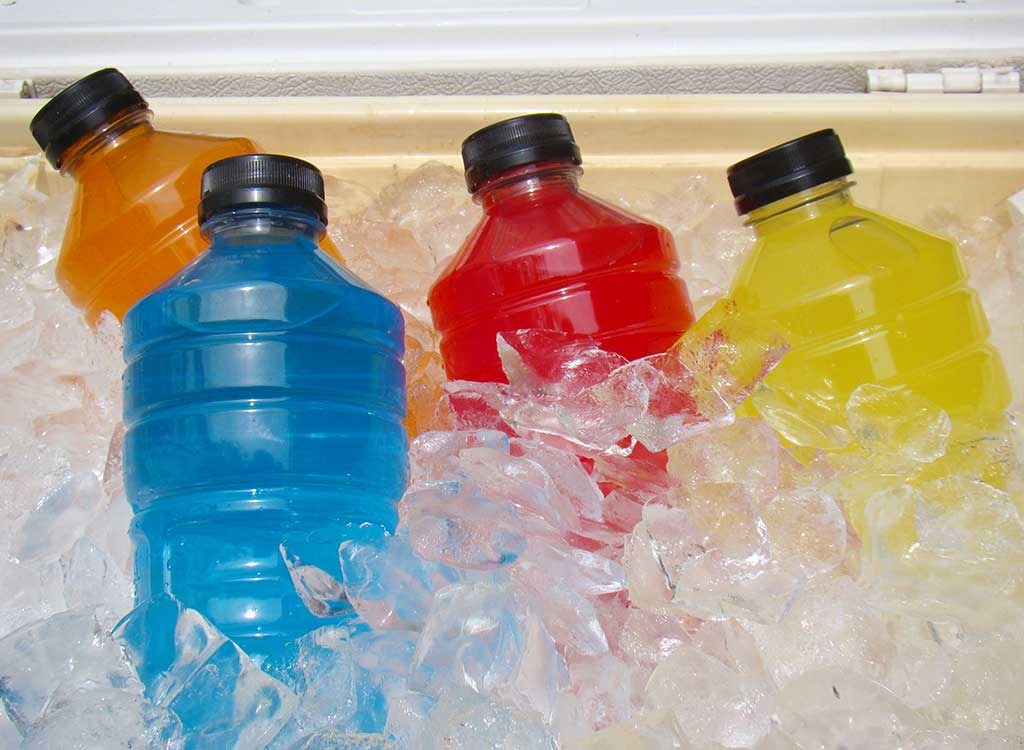
Sports drinks like Gatorade may be helpful for highly active, healthy people, but people with diabetes should steer clear—even if they hit the gym on the reg. "They can be an unnecessary source of calories, added sugars, and sodium, which are all things people with diabetes should avoid," Newgent warns. Stay hydrated during your workout with cold H2O—it really is your best bet, or with a natural electrolyte-packed, low-calorie sports drink such as HALO Sport.
Soda

You may already know that soda isn't the best bet for diabetics, but you may not realize just how damaging the beverage can be. "Within the first 10 minutes of drinking a soda, about 10 teaspoons of sugar hit the system. It's rapidly absorbed and signals an insulin release, which is a problem for people with diabetes since they have insulin resistance," Jacobson explains.
Diet Soda
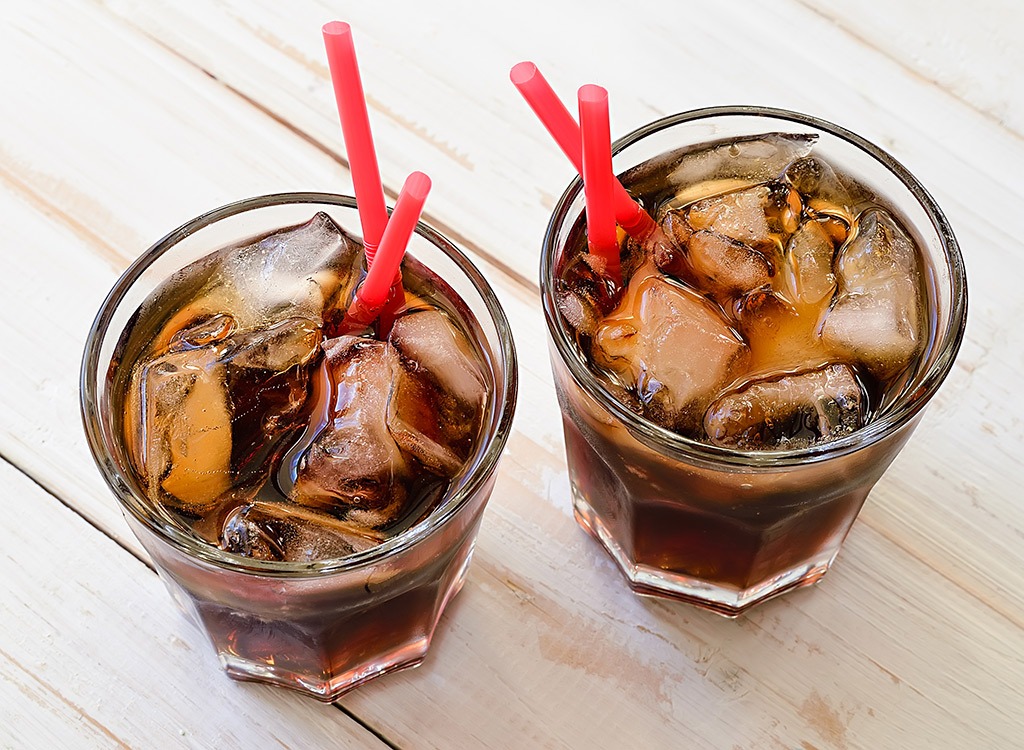
Sorry—this option isn't safe either. Jacobson adds, "Diet sodas aren't much better. Sweeteners are 200 to 600 times sweeter than sugar and signal an insulin release from the pancreas. So even if you're not drinking straight-up sugar, you're still signaling a release and perpetuating that dysfunctional physiological response."
Cinnamon Rolls
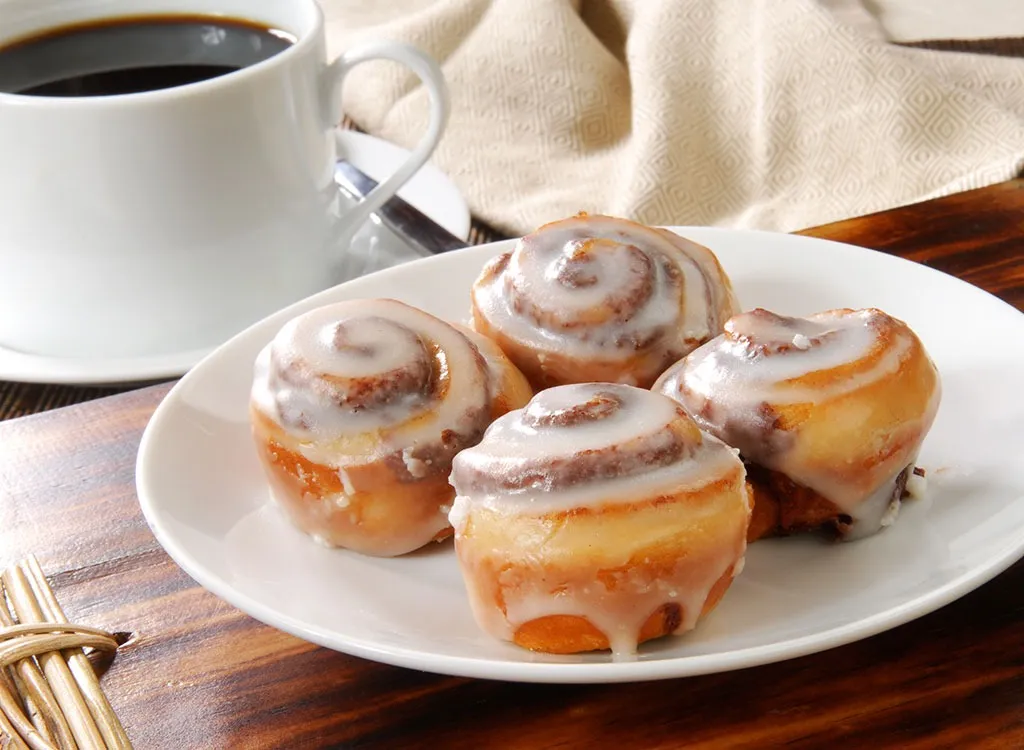
Though you likely assumed sugary donuts and muffins weren't the best way to kick off your day, we bet you didn't realize just how awful certain pastries can be. "Cinnamon rolls, for example, can contain more saturated fat and added sugars than people with diabetes should have in an entire day," cautions Newgent. Yikes!
Frozen Dinners
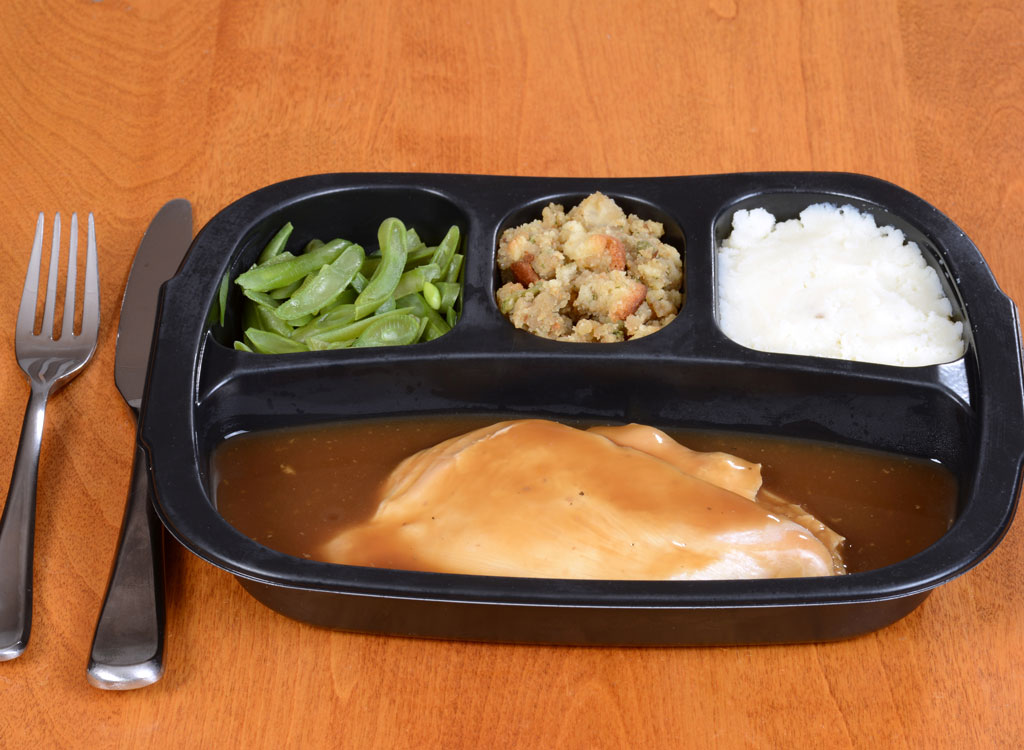
When most people hear the word "diabetes," they typically think about things like carbs and sugar. But salt plays a role in diabetes health, too. Dialing back on salt can help lower your blood pressure, and in turn, your risk for heart attack or stroke, two diseases commonly associated with diabetes. And since many frozen dinners are teeming with sodium to act as a flavor-enhancer and preservative, it's best to keep consumption of the heat-and-serve food to a minimum.
Artificial Sweeteners
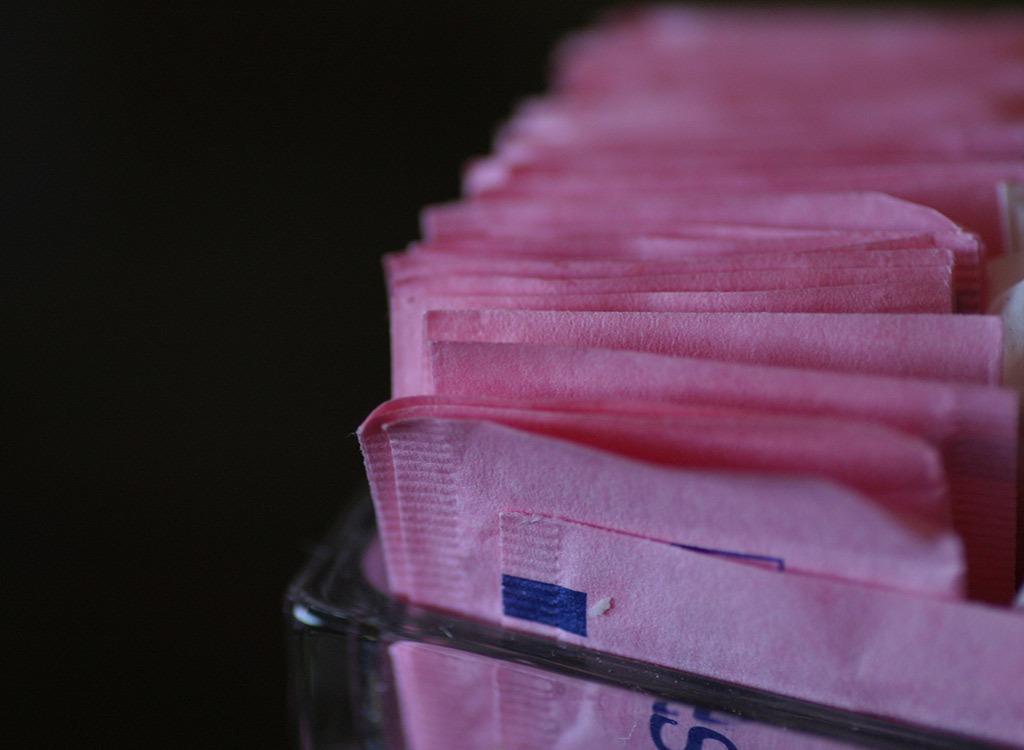
Contrary to popular belief, these fake sweeteners are not healthy for people with diabetes to consume. According to a study in Diabetes Care, drinking artificially-sweetened beverages daily was associated with a 36 percent greater risk for metabolic syndrome and a 67 percent increased risk for type 2 diabetes. Experts believe the reasoning is because artificial sweeteners are anywhere from 180-20,000 times sweeter than table sugar. Frequent consumption can cause an alteration in your sweet taste bud receptors, which makes vegetables and even fruits taste more bitter than they actually are. This causes you to neglect those foods and go after foods that satisfy that desire for sweetness.
Fast Food
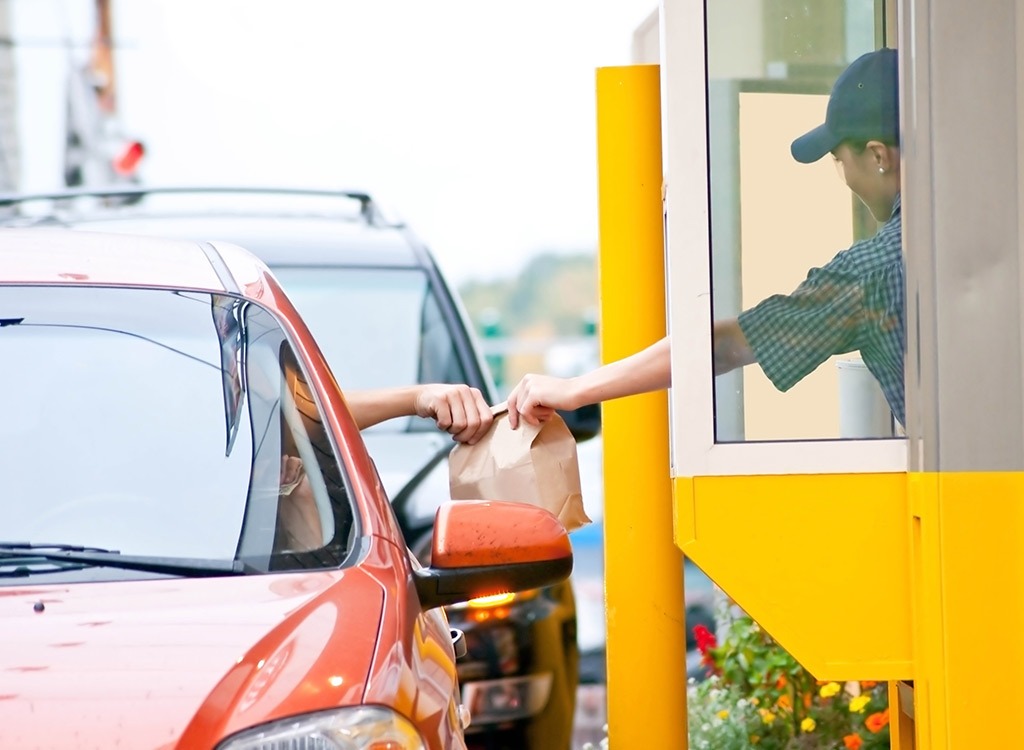
Drop that McDonald's breakfast sausage and Egg McMuffin because you're on the one-way road to better health! In a 15-year study consisting of 3,000 adults, it was found that those who ate fast food more than twice a week developed insulin resistance at twice the rate than those who didn't consume fast food. Insulin resistance increases the risk of developing type 2 diabetes and prediabetes.
Gluten-Free Foods
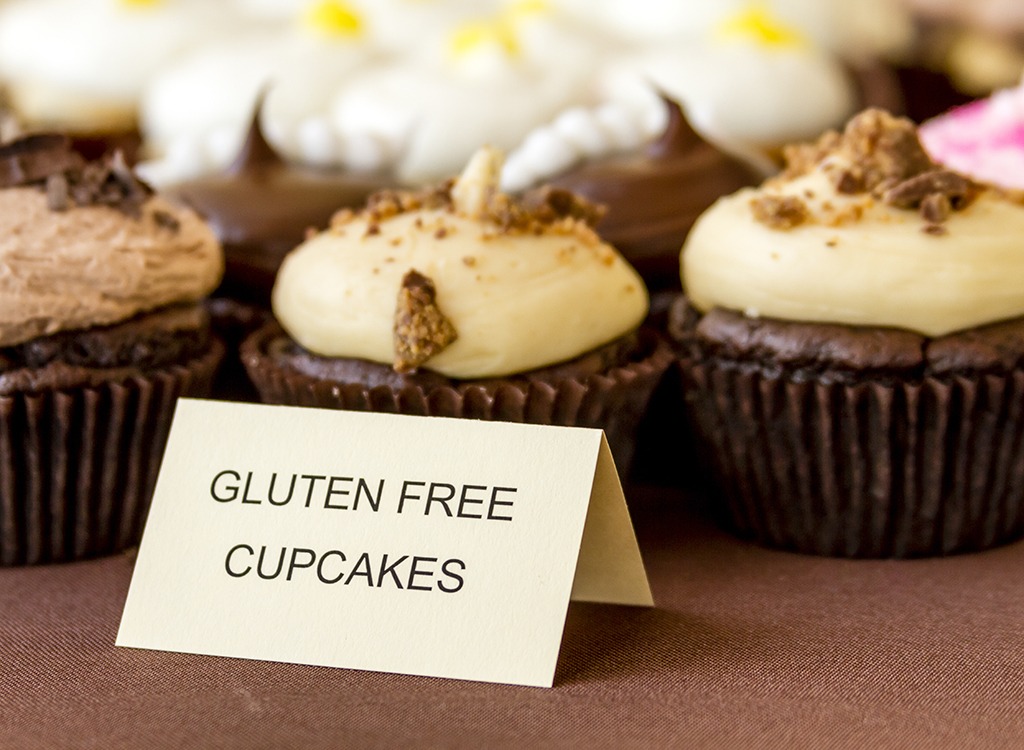
Believe it or not, gluten-free doesn't always mean the dish is healthier. Snyder tells us that because the gluten protein provides elasticity and volume in baked goods, often times "gluten-free foods are actually denser and, therefore, will have more carbohydrates per serving [than conventional foods]."
Mixed Coffee Drinks
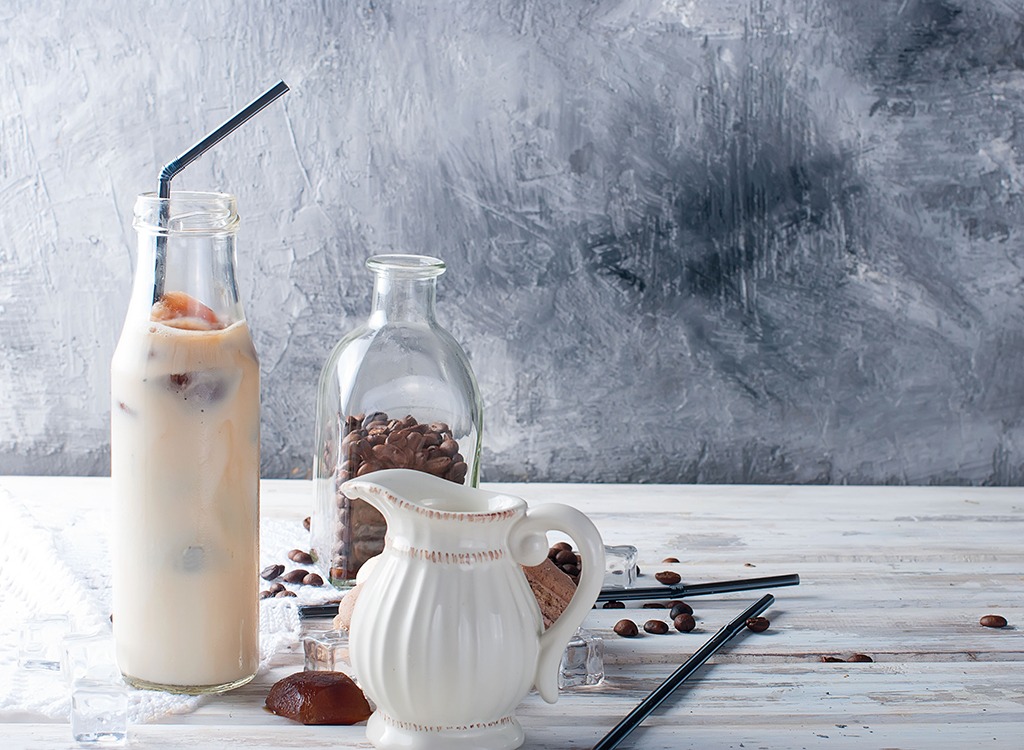
Sure, they look awful tempting topped with whipped cream and chocolate sauce, but you'll want to say "no" to sugary coffee drinks, Zanini advises. "A small ice-blended chocolate coffee drink from a café can easily contain over 44 grams of sugar, which is equal to 11 teaspoons. That's much more than the American Heart Association's 6 teaspoon recommendation."
Coffee Creamer
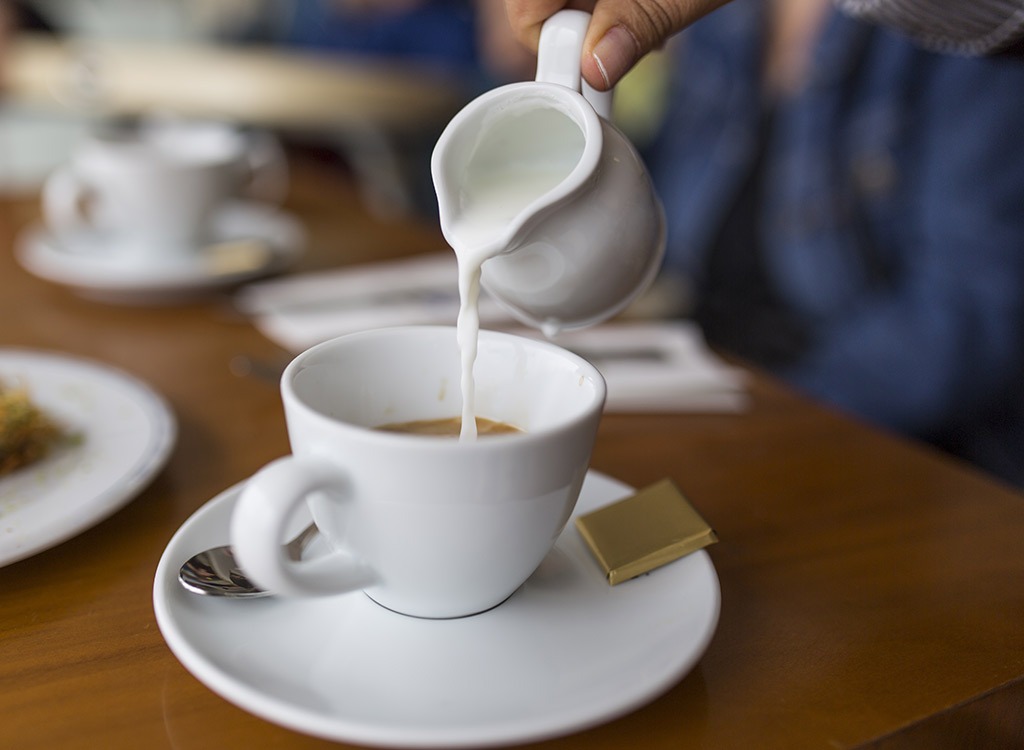
You might not even think about it, but your coffee creamer could be loaded with added sugar you don't think about—even if you're just getting the original flavor. To keep your glucose levels in check, opt for low-sugar or sugar-free versions if you must use creamer.
Processed Lunch Meat
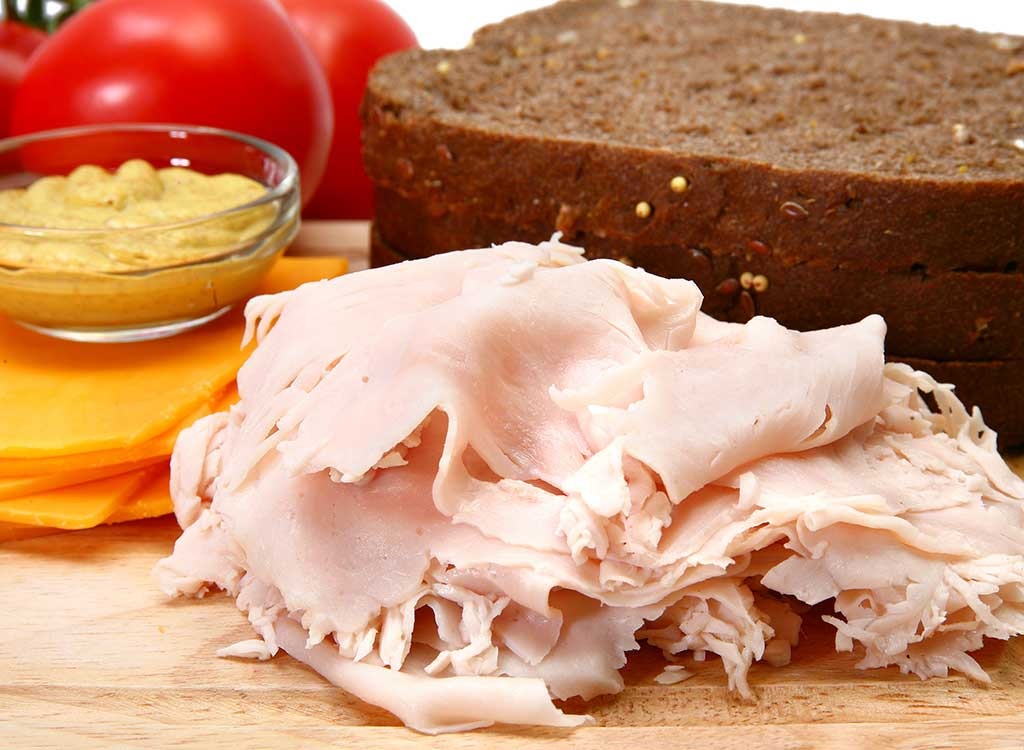
Consider this: just two of those thinly-sliced pieces of deli meat can contain more sodium than a bag of pretzels. That's over 680 milligrams! (And, let's be honest, who only uses two slices?) A diet high in sodium is especially taxing for patients with diabetes, as it increases your already-heightened risk for high blood pressure (hypertension) and heart disease.
Pretzels
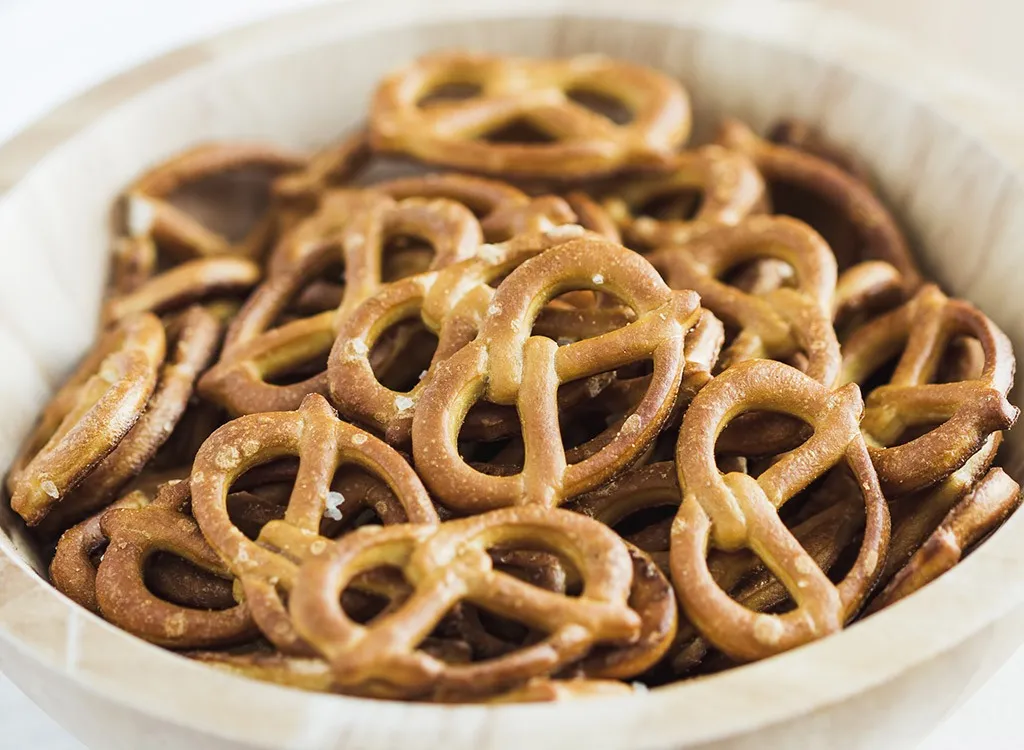
Speaking of pretzels, this addicting snack isn't the best choice for diabetics either. The one-two punch that makes pretzels a no-go for diabetics? It's the combination of being high in heart-taxing sodium and refined, simple carbs that can easily spike your blood sugar.
Energy Drinks
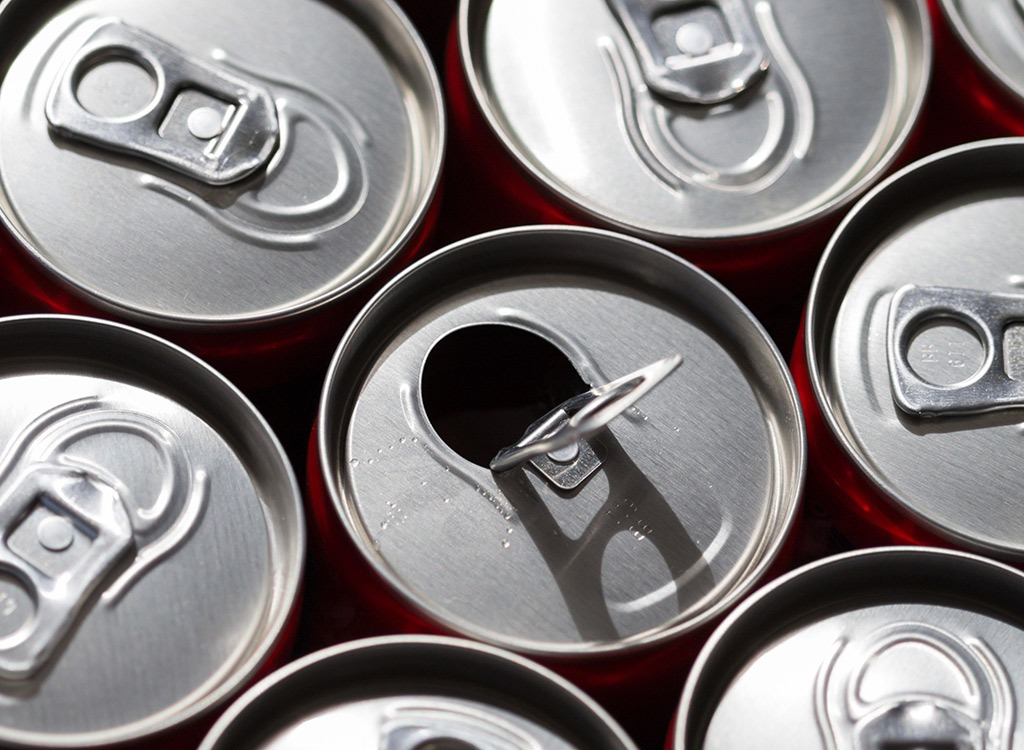
And the reason isn't only because they taste awful. Researchers from the University of Calgary found that consuming caffeinated energy drinks (with 200 milligrams of caffeine) can cause blood glucose and insulin levels to spike by upwards of 30 percent and may lead to subsequent problems bringing blood sugar levels down to normal. According to one of the researchers behind the study, the caffeine is at fault for your body's inability to subsequently stabilize blood sugar as the stimulant persists in your system for four to six hours after consumption. The underlying mechanism behind caffeine's influence on blood sugar is currently unknown.
Bottled Tea
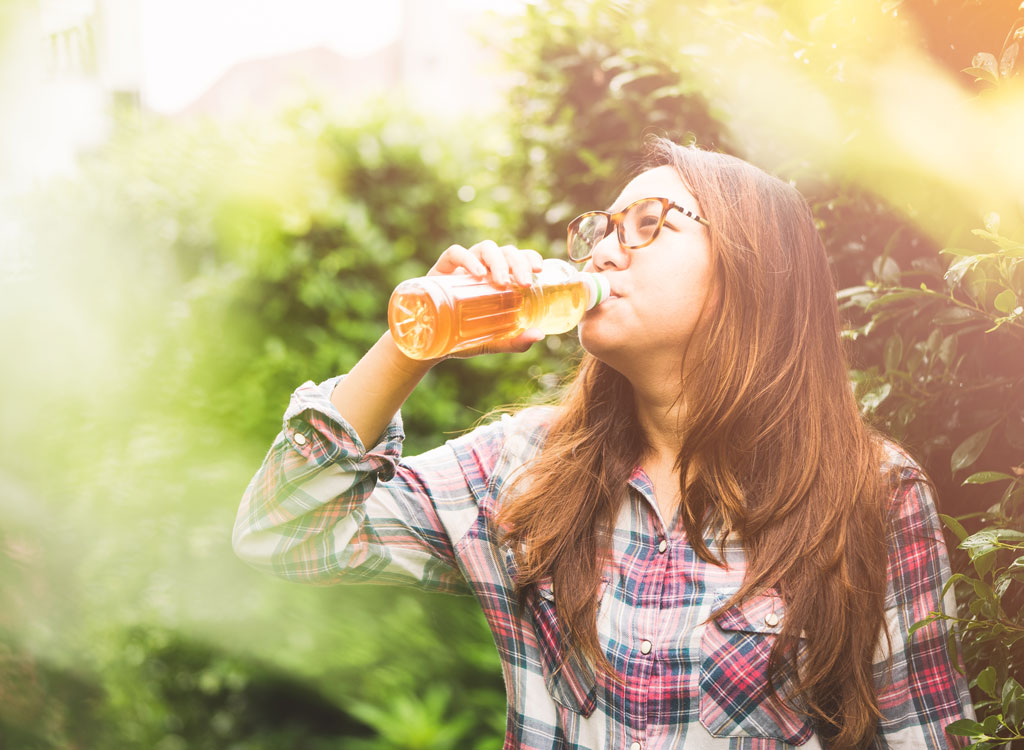
In its purest form, tea is one of the best weight loss allies you'll find. But not all teas are created equal—especially those sold in bottles. Rather than getting an antioxidant-rich elixir, you're simply sipping on a beverage that's packed with a ton of sugar. Take Arizona Iced Tea With Lemon Flavor as an example. Finishing the entire 23 fluid–ounce can would mean guzzling down a 25 grams of carbs, 24 grams of which are pure sugar.
Dried Fruit
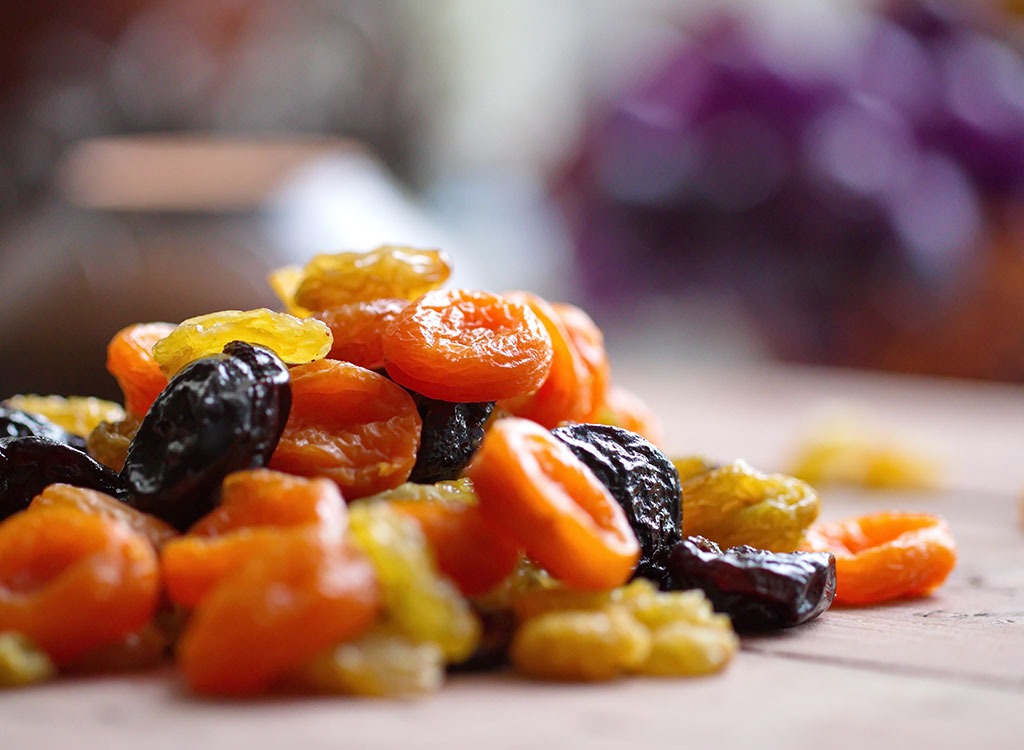
Don't be fooled. Yes, these sweet treats are produced by nature, but they sure aren't innocent. Real fruit contains nutrients like water and fiber, which both help to fill you up. When dried, these sweet and chewy snacks can carry anywhere between 34 and 74 grams of carbs—for raisins and dates, respectively—for one small 1.5-ounce serving.
Orange Juice
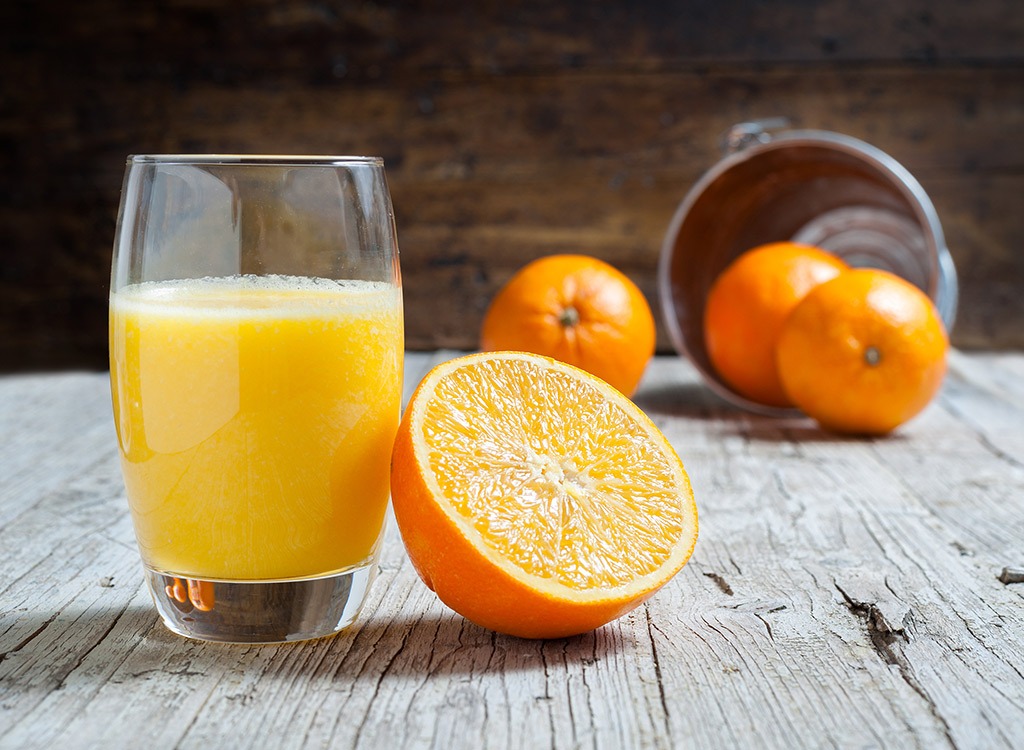
Sure, it's natural and overflowing with vitamin C, but it's loaded with sugar—and totally void of any nutrients like fiber or protein to help slow the sugar spike. An average glass packs 36 grams of sugar—or about what you'd get from popping 4 Krispy Kreme glazed donuts into a blender and hitting frappe. What's more, most of the sweetness in juice comes from fructose, a type of sugar associated with the development of belly fat.
Muffins
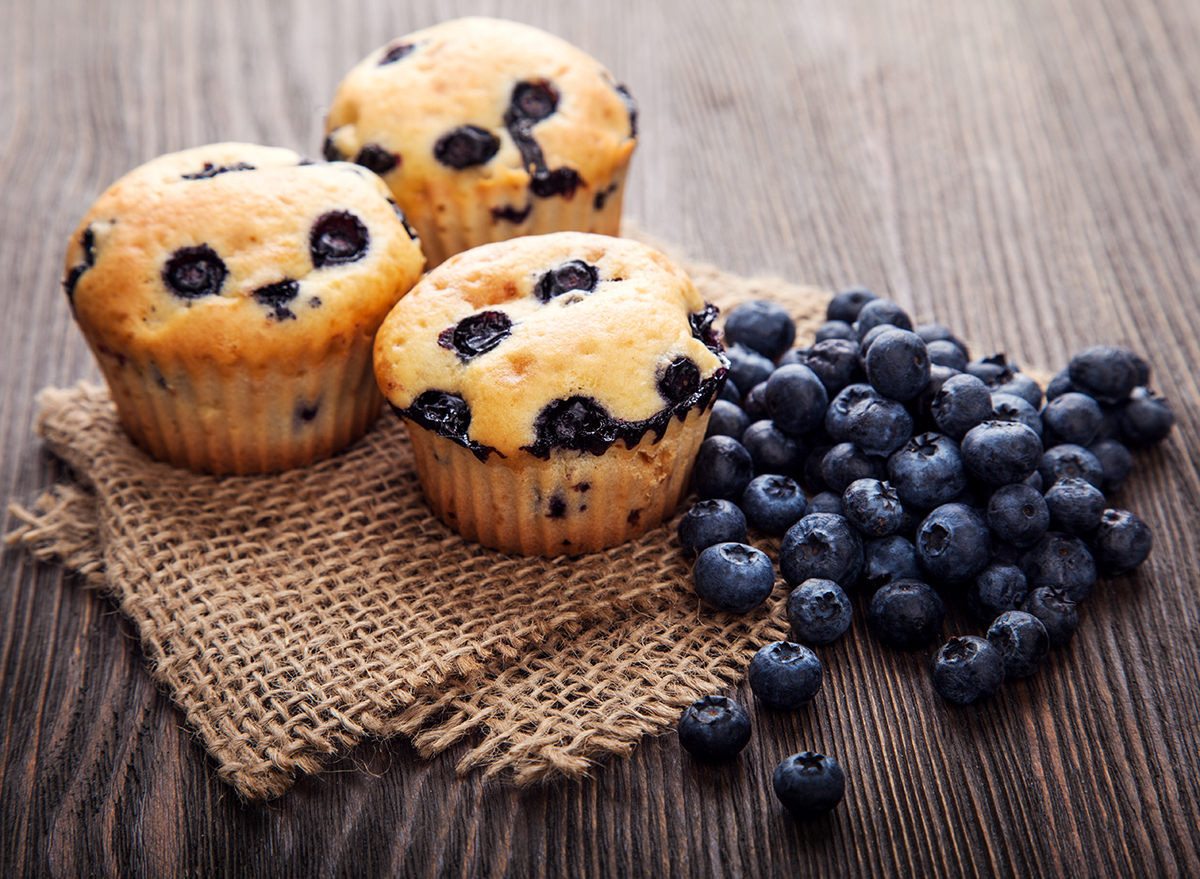
Get this: Just one commercially prepared blueberry muffin has as many carbs as not one, not two, but five slices of bread! It's also a fat and calorie-mine, carrying over 520 calories and a third of the day's fat in one pastry. And eating half now and "saving the rest for later" is nearly impossible; foods rich in carbs, fat, and sugar are downright addicting. A University of Montreal study found that mice who had been fed diets with high levels of those very nutrients displayed withdrawal symptoms and were more sensitive to stressful situations after they were put on a healthier diet.
Cereal Bars
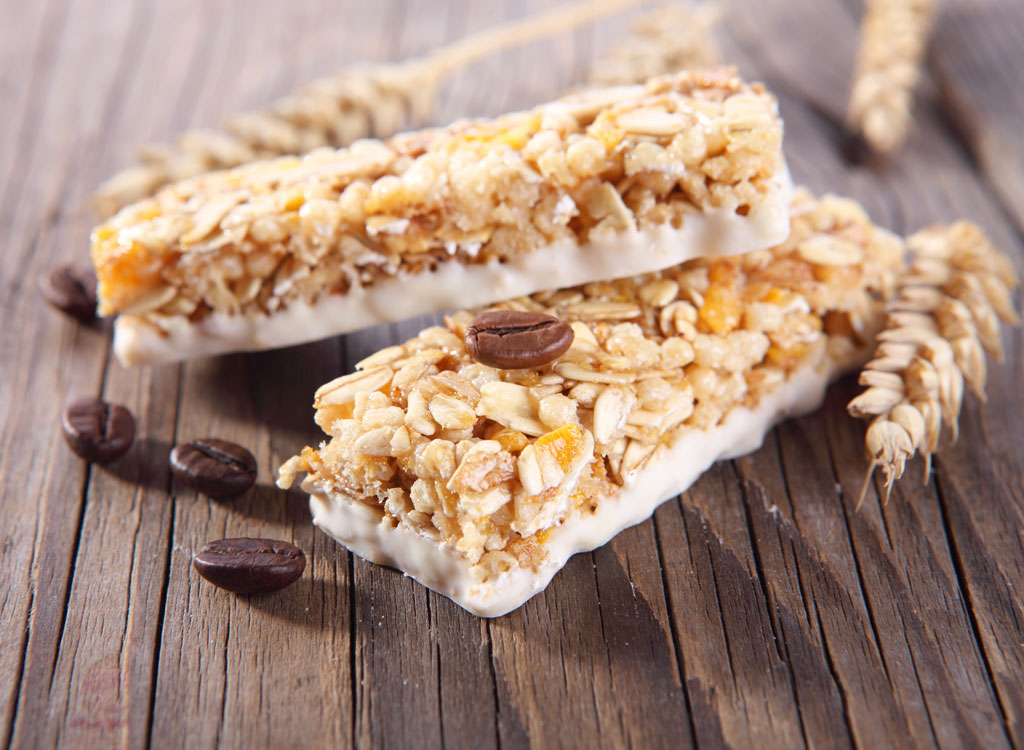
They might be the perfect early-morning shortcut, but it's probably best for you to reconsider your grab-and-go meal if you have diabetes. Granola- and cereal-based bars aren't just high in refined carbs, but they're also coated in countless grams of syrups and sugars to keep them bound. Cereal bars, in particular, can serve up nearly 30 grams of carbs and 16 of those are straight up sugar. With only 1 gram of fiber, your blood glucose levels will be hitching a ride on the sugar roller coaster.
Flavored Yogurts
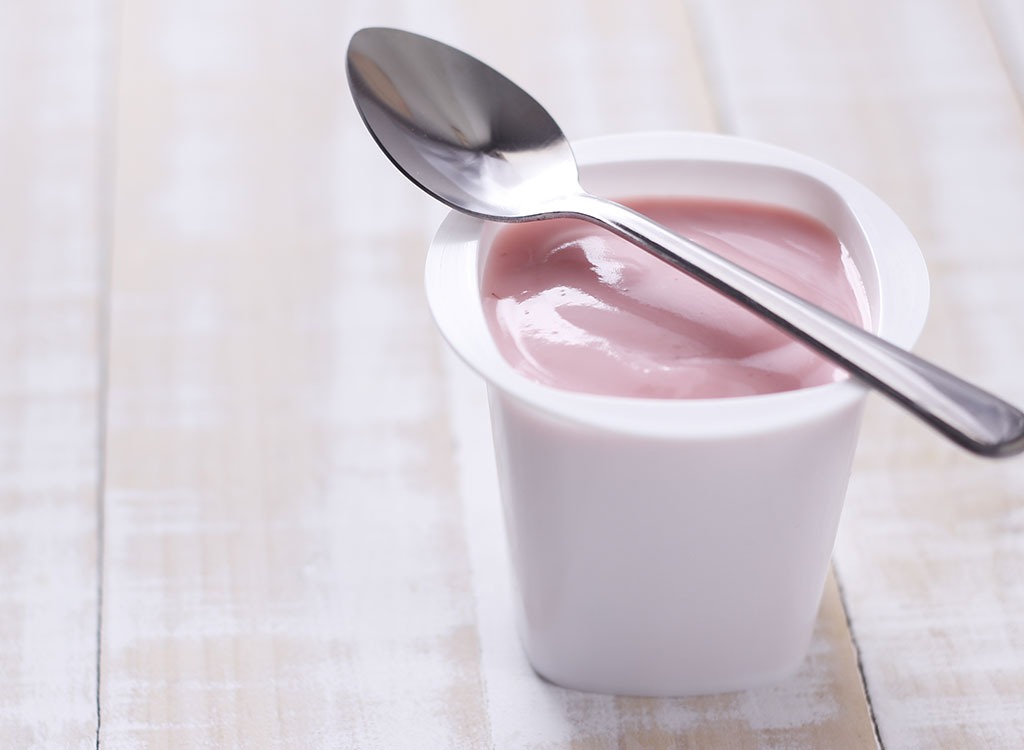
All those smiling models in yogurt commercials obviously haven't checked out the ingredients list on their purportedly healthy snack. Most fruit-flavored yogurts on the market contain little precious fruit and are sweetened with sugar instead. It's not just fruit-flavored yogurts that are the culprits. One well-known brand's Thick & Creamy Vanilla yogurt serves up 31 grams of carbs—28 of which are sugar—and is only matched with 2.5 grams of fat and 7 grams of protein.
Potato Chips
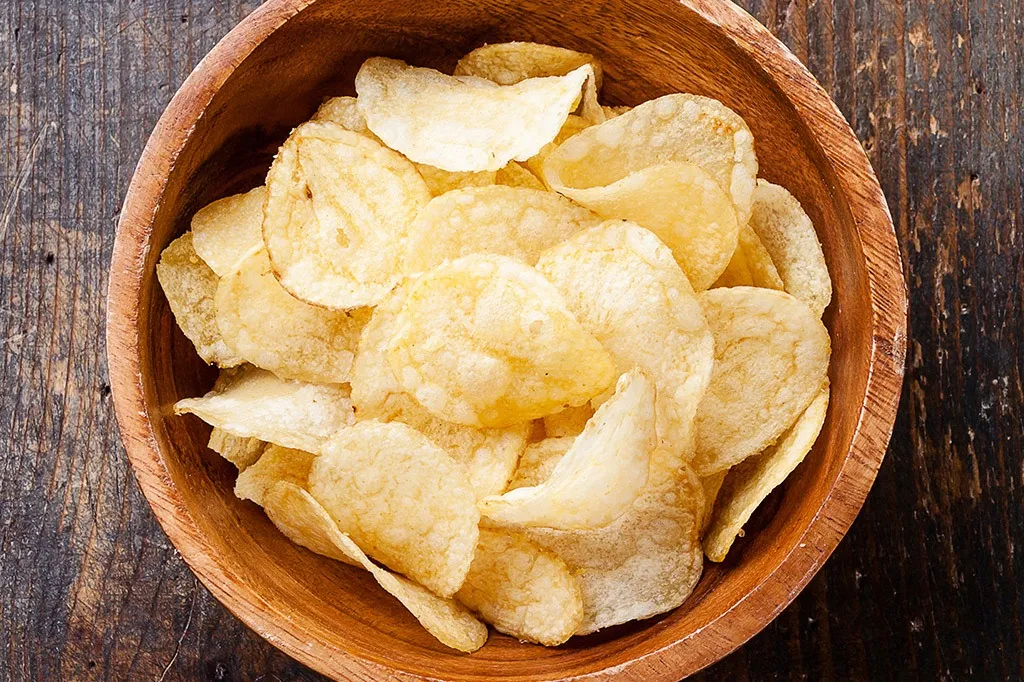
There's a reason potato chips are one of the most addicting junk foods. They're pulverized, soaked in fat, and loaded with salt. Potato chips are a disaster for diabetes because they are a carb and fat bomb that will quickly spike your blood sugar says Nicole Anziani, RD, CDE and Clinical Manager at Fit4D.
Pancakes
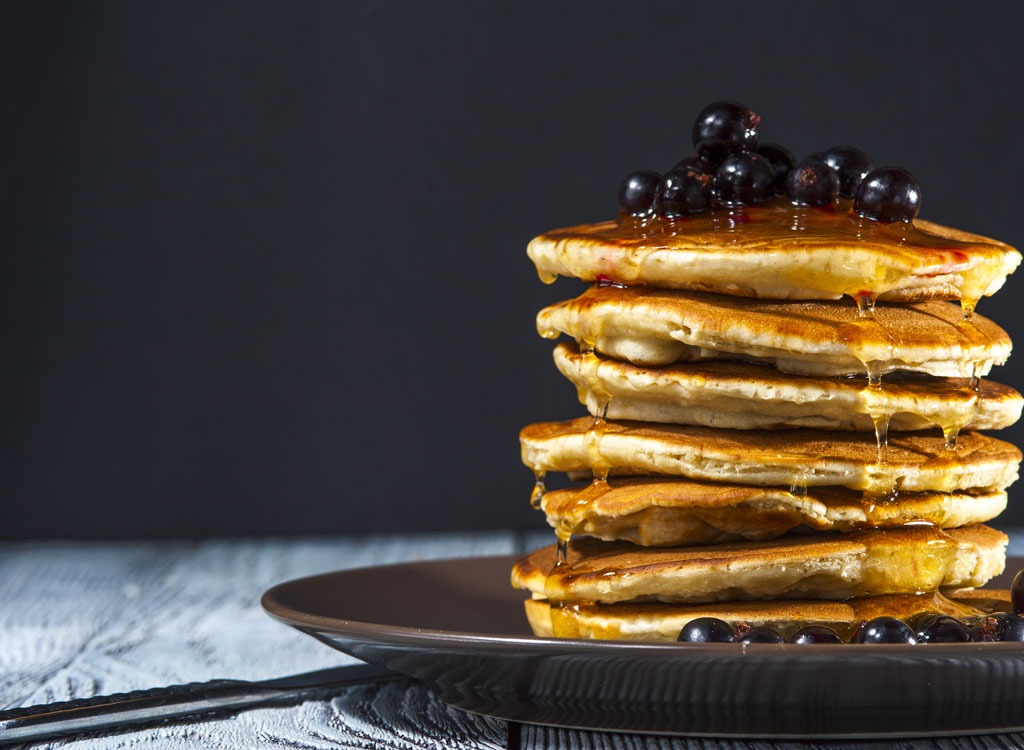
Pancakes are a breakfast staple but they're almost completely void of nutrition. More of a pastry than a nutritious breakfast choice, pancakes are usually loaded with more unhealthy toppings such as sugary syrup and saturated fat-laden butter. "Sugar and saturated fat in combination make the blood sugar spike last longer," Anziani says.
Fat-Free Frozen Yogurt
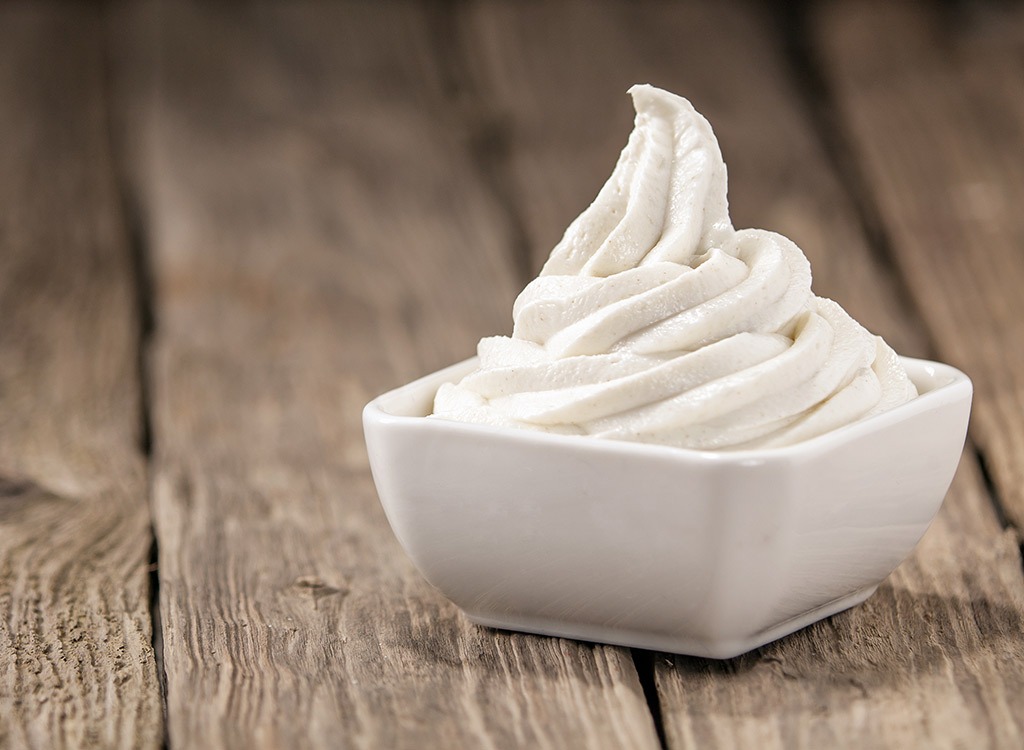
Frozen yogurt seems like the healthier alternative to ice cream, especially without all the fat, but "when you remove that fat, you add more sugar for taste," Anziani says. "This is an easy way to raise blood sugar." Not to mention getting fro-yo at a yogurt shop usually means you'll be adding tons of sugary toppings like candy, syrupy fruit, and hot fudge.
Parfaits
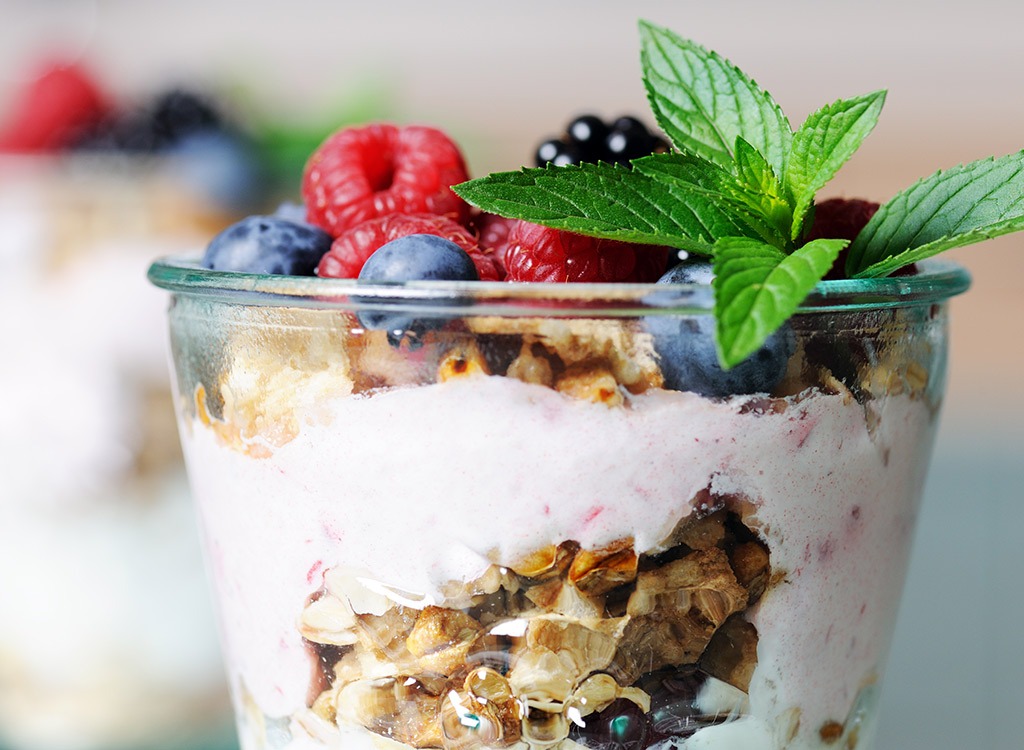
Yogurt parfaits are one of the worst offenders of having a health halo—they sound nutritious, but are secretly a sugar and calorie bomb. Anziani says parfaits are usually all carbs; with flavored yogurt, sweetened granola, and high-sugar fruit puree, they can pack up to 60 grams of blood-sugar-spiking carbs. You're better off opting for unflavored plain Greek yogurt and adding chia seeds and a handful of blueberries.
Skim Milk
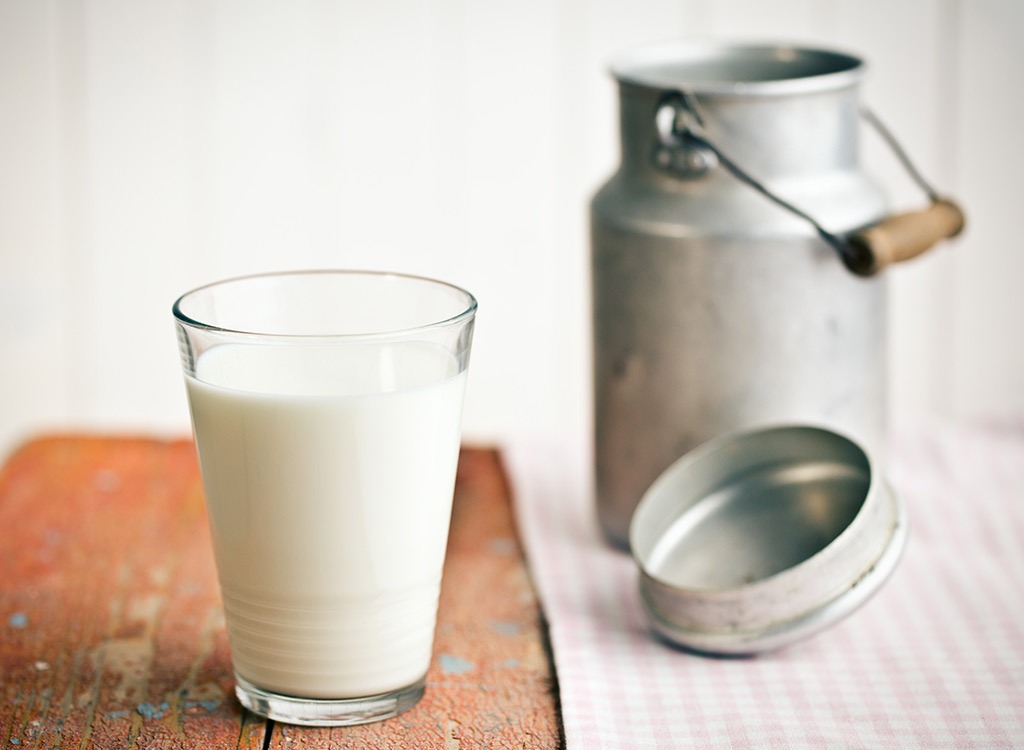
Most people assume skim milk is better since all the fat has been taken out. But that's not the case for diabetics. "When you take out the fat, this becomes a primarily carbohydrate beverage," Anziani says. "A glass of milk at night will usually result in an elevated blood glucose level in the morning."
Fat-Free Vinaigrettes
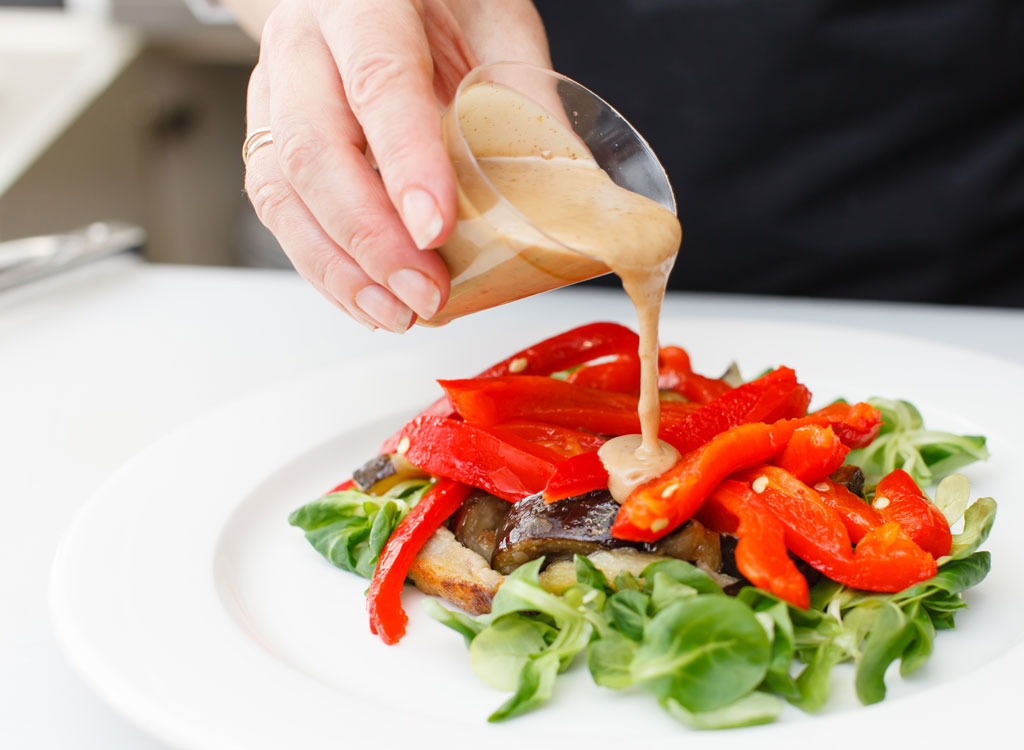
A salad seems like a healthy meal until you destroy it with a caloric dressing. Trying to find a diabetic-friendly dressing is like navigating a minefield of sugar and fat. But even fat-free options aren't always better for you. "When you remove the fat, something needs to be added in its place for flavor and mouthfeel," Anziani says. "That's usually going to be some sort of starch and lots of sugar." Avoid those unhealthy bottled dressings and drizzle your salad with olive oil and balsamic vinegar instead.
Vegetable Oil
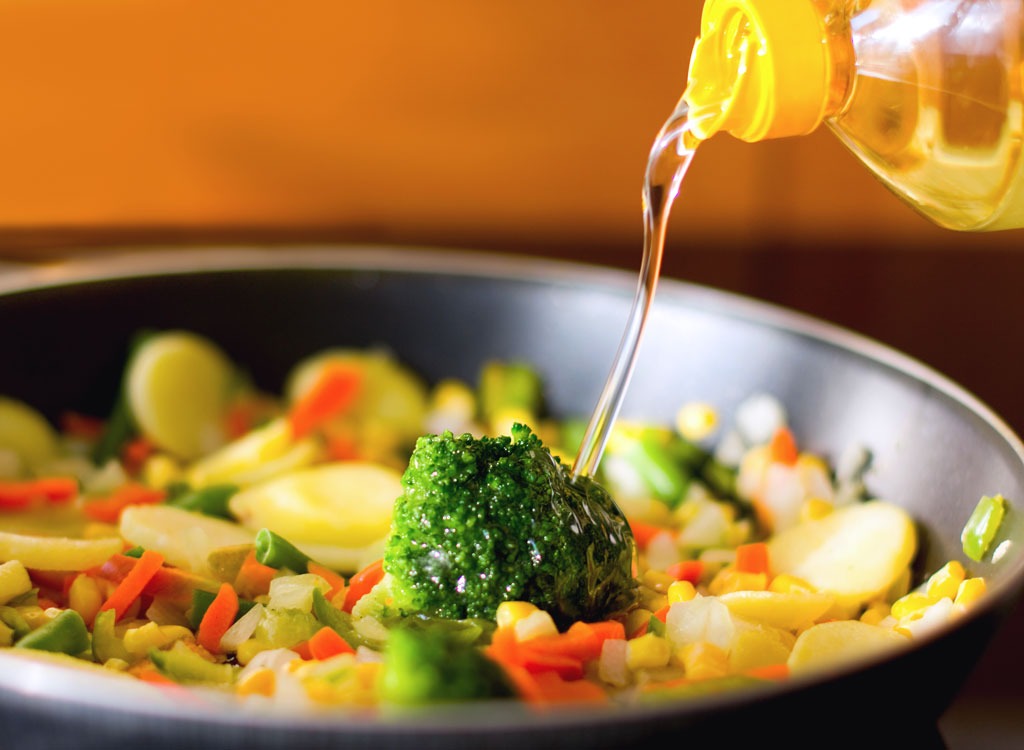
Partially hydrogenated oils are a form of trans fat, which are some of the most inflammatory oils available, explains Anziani. Watch out for vegetable oils that are made with partially-hydrogenated palm and soybean oils, which contain trace amounts of trans fats. Cook with extra virgin olive oil, avocado oil, or grapeseed oil instead.
Fruit Snacks
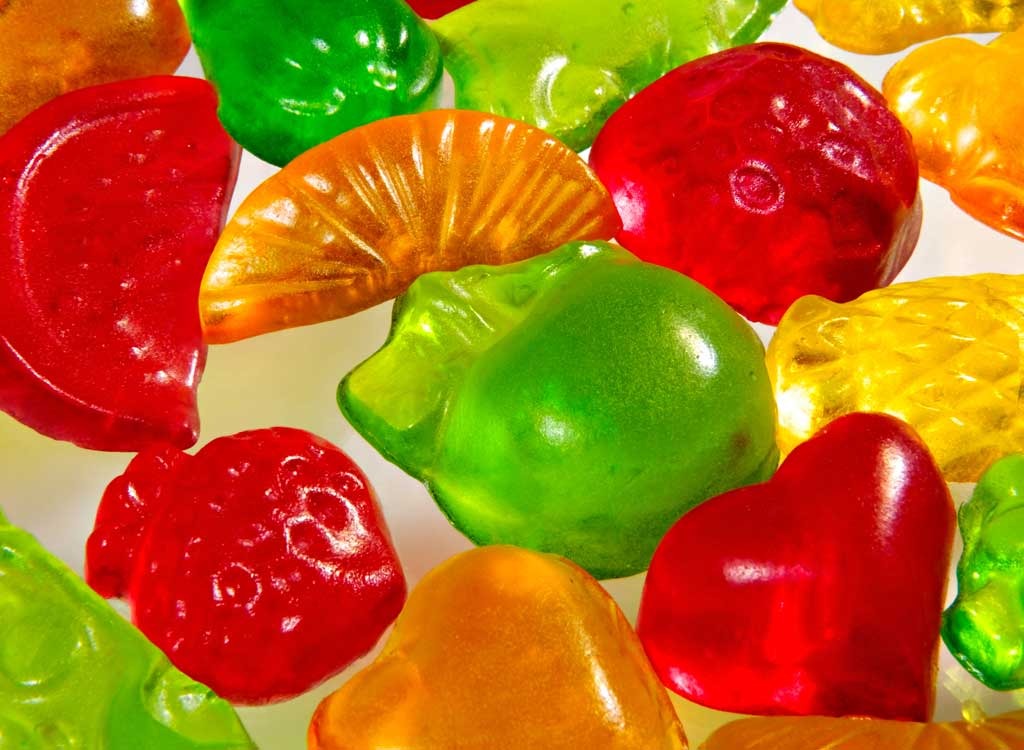
Don't be fooled by the word fruit; these little gummies are nothing but sugar bombs. "Even if made with real fruit juice, these are candy and will rapidly raise blood sugar," Anziani says. Snack on a low-sugar fruit instead, such as blueberries, raspberries, or an apple.
Biscuits
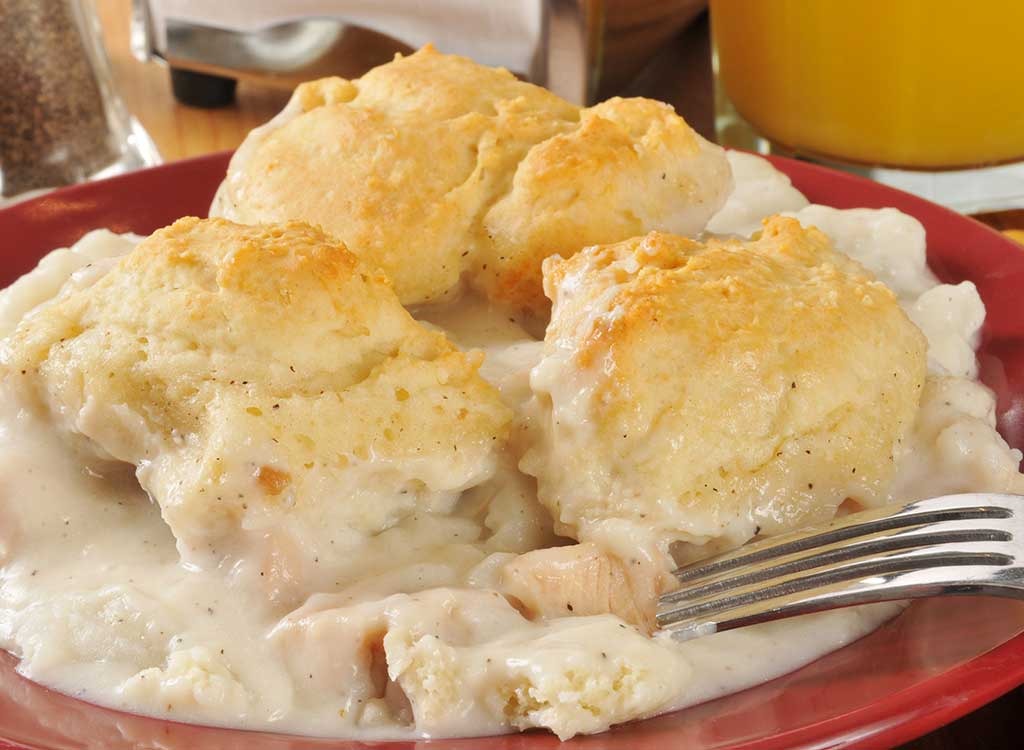
Buttery biscuits aren't just pure carbs; they're also potentially laden with other bad-for-you things, too, especially commercial biscuits from the store or a fast-food joint. "If homemade, [biscuits are] still a flour and saturated fat bomb leading to inflammation of the body and brain," Anziani explains. In addition to diabetes, inflammation has been linked to other health complications such as obesity and cancer.
Sandwich Crackers
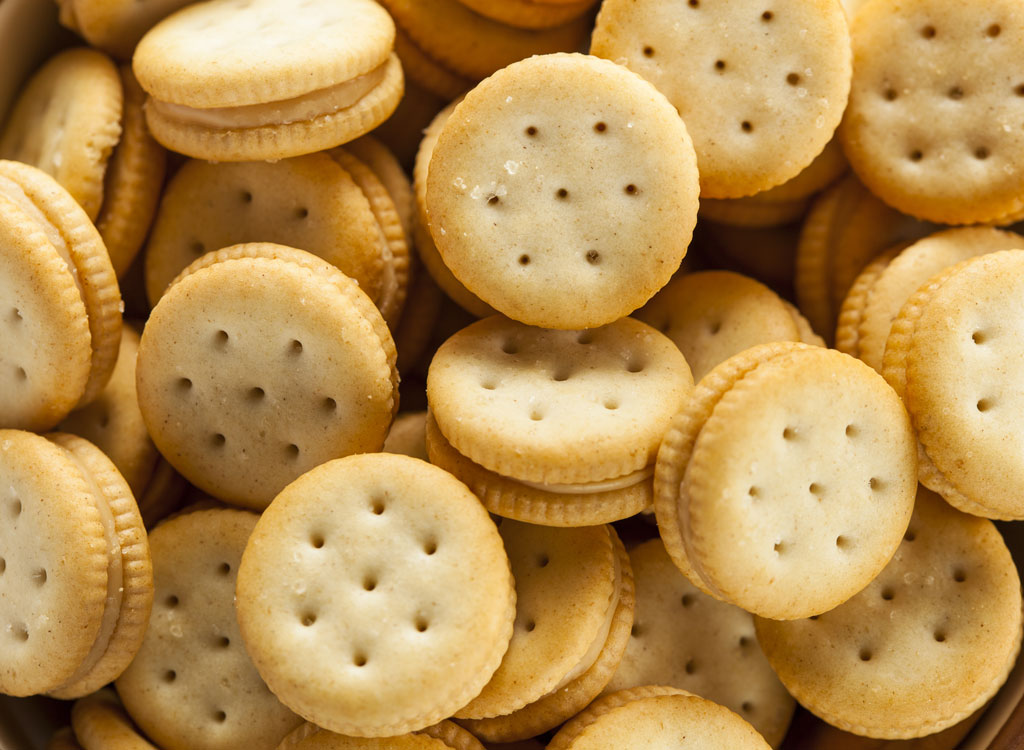
Although all-natural, unsweetened peanut butter is a good food for diabetics, it's a far cry from the processed peanut butter found in packaged sandwich crackers. These are made with highly refined crackers, Anziani says, and peanut butter made with lots of sugar and salt which will raise blood sugar and blood pressure.
Mac & Cheese
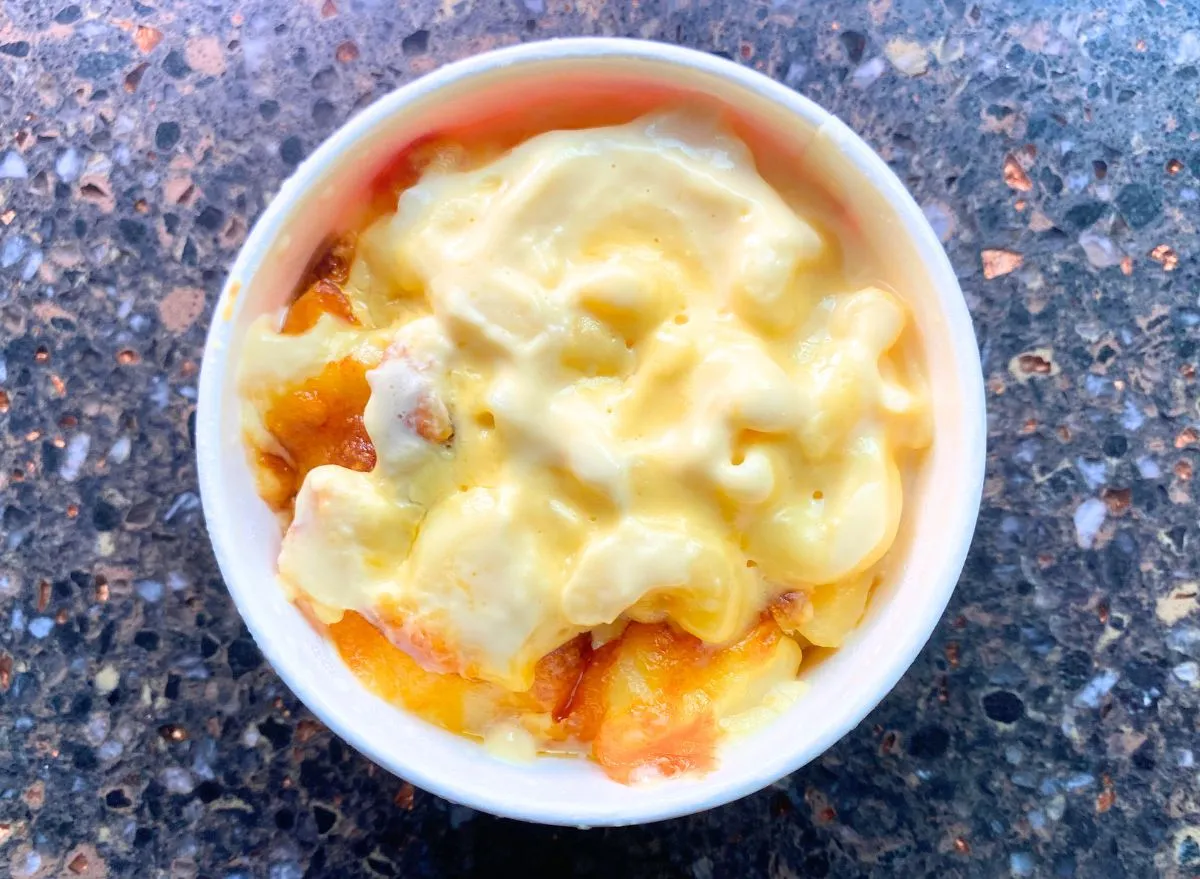
Macaroni and cheese is usually made with white flour and highly refined noodles, mixed with high-fat milk and cheese. Anziani says this combination of refined carbs and saturated fat will lead to inflammation in the body and brain. Macaroni and cheese also has a high glycemic load.
Flavored Instant Oatmeal
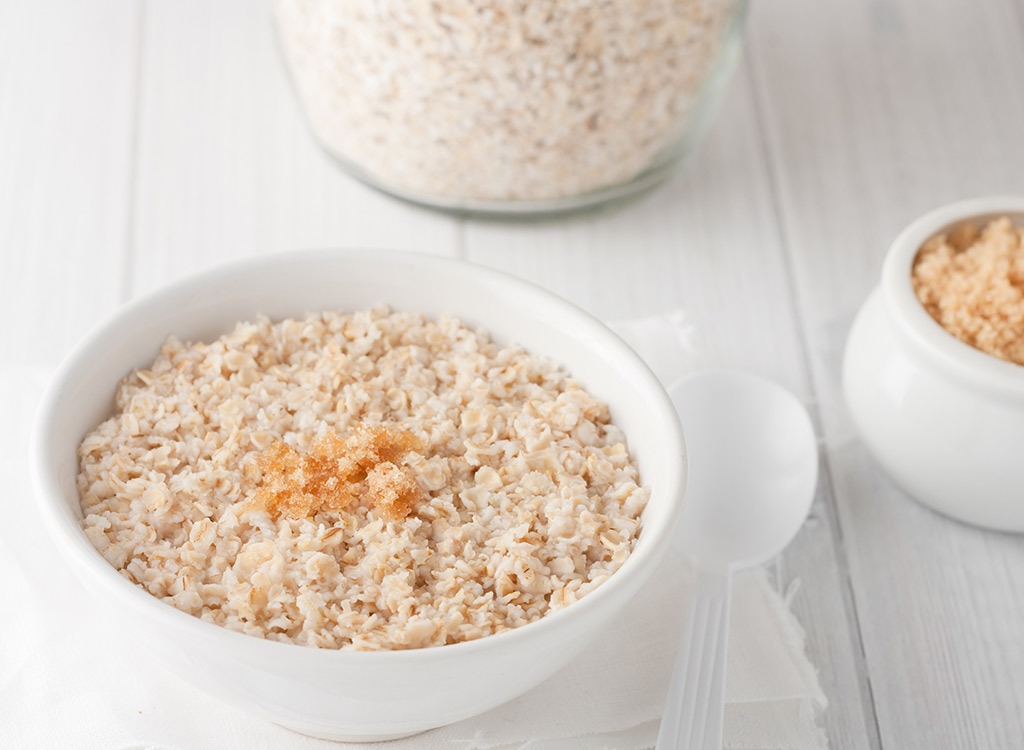
Plain oats are one of our best foods for diabetes because they contain a fiber called beta-glucan, which seems to have an anti-diabetic effect. However, flavored oatmeal is usually processed and contains added sugar and other sweetened ingredients. "Pulverized oats are absorbed quickly, and adding extra sugar makes this into a sugar," Anziani says.
Instant Noodles

Instant noodles such as the packets of ramen and Cup-o-Noodles aren't just refined carbohydrates; they can contain up to a day's worth of sodium, too. This can spike blood sugar, warns Anziani.
Saltines
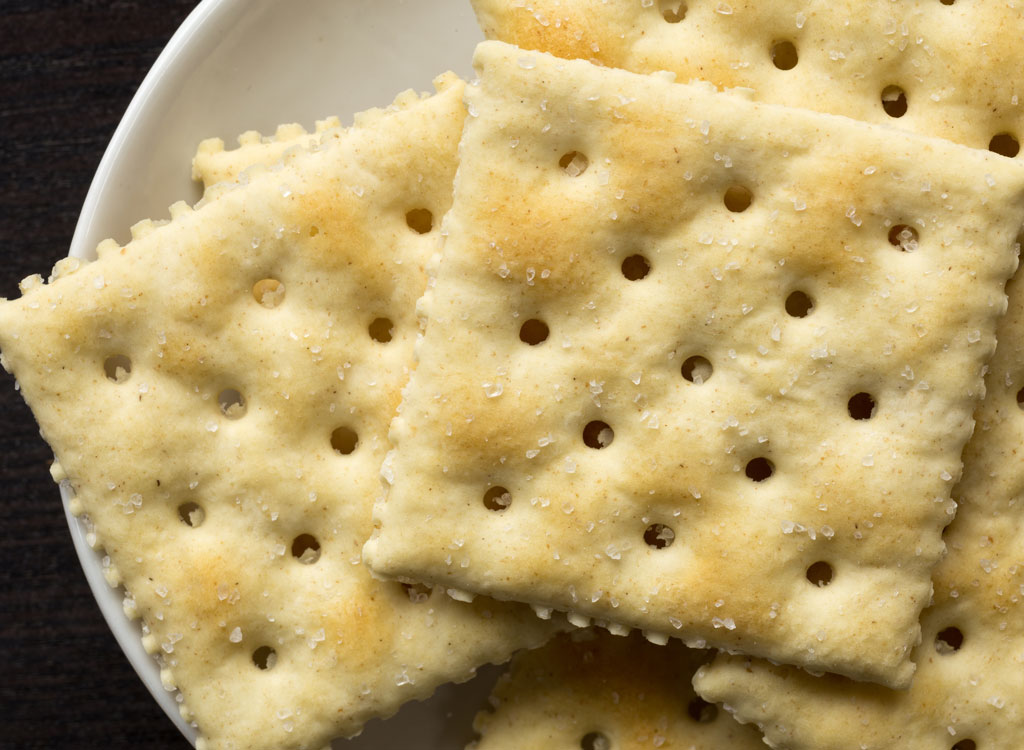
Even if saltine crackers were a childhood snack usually paired with chicken noodle soup, they have no place in a diabetes diet. "Think of these as highly refined flour products, which are almost instantaneously absorbed," Anziani says.
Mixed Drink Cocktails
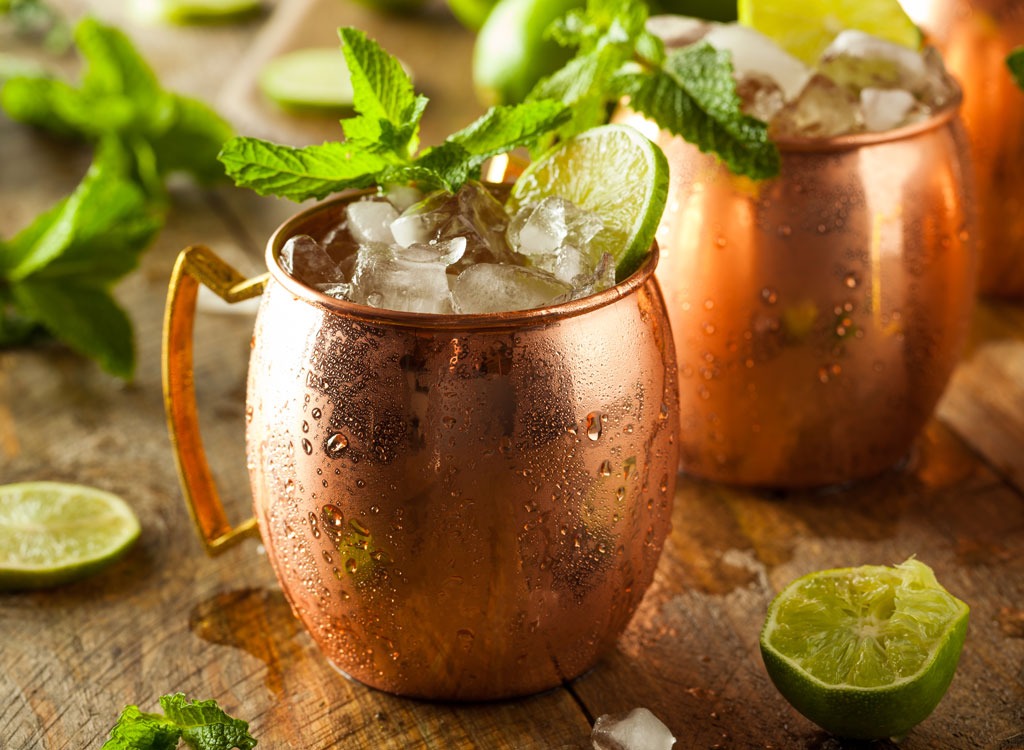
Drinking while on diabetes is dangerous as it is since alcohol by itself, (just straight liquor) can cause some diabetics to have a hypoglycemic crash, Anziani warns. "Mixing [alcohol] with juices and sodas can cause blood sugar to spike," she says. So stay away from high-sugar cocktails and sweetened mixers and instead opt for a glass of red wine every once in a while—as long as your doctor gives the go-ahead.
Grilled Cheese
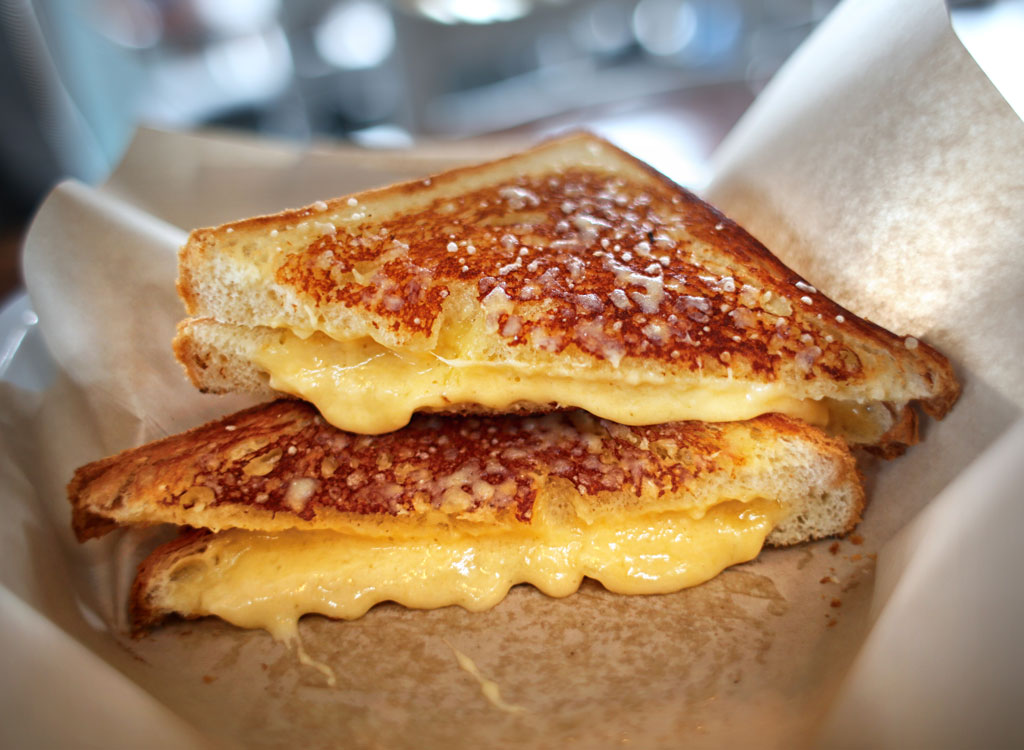
Grilled cheese is often made with highly refined white bread and lots of fatty cheeses. Like mac and cheese, grilled cheese is nothing more than refined flour and saturated fat. Anziani warns that this can lead to inflammation of the body and also spikes in blood sugar.
Jams and Jellies
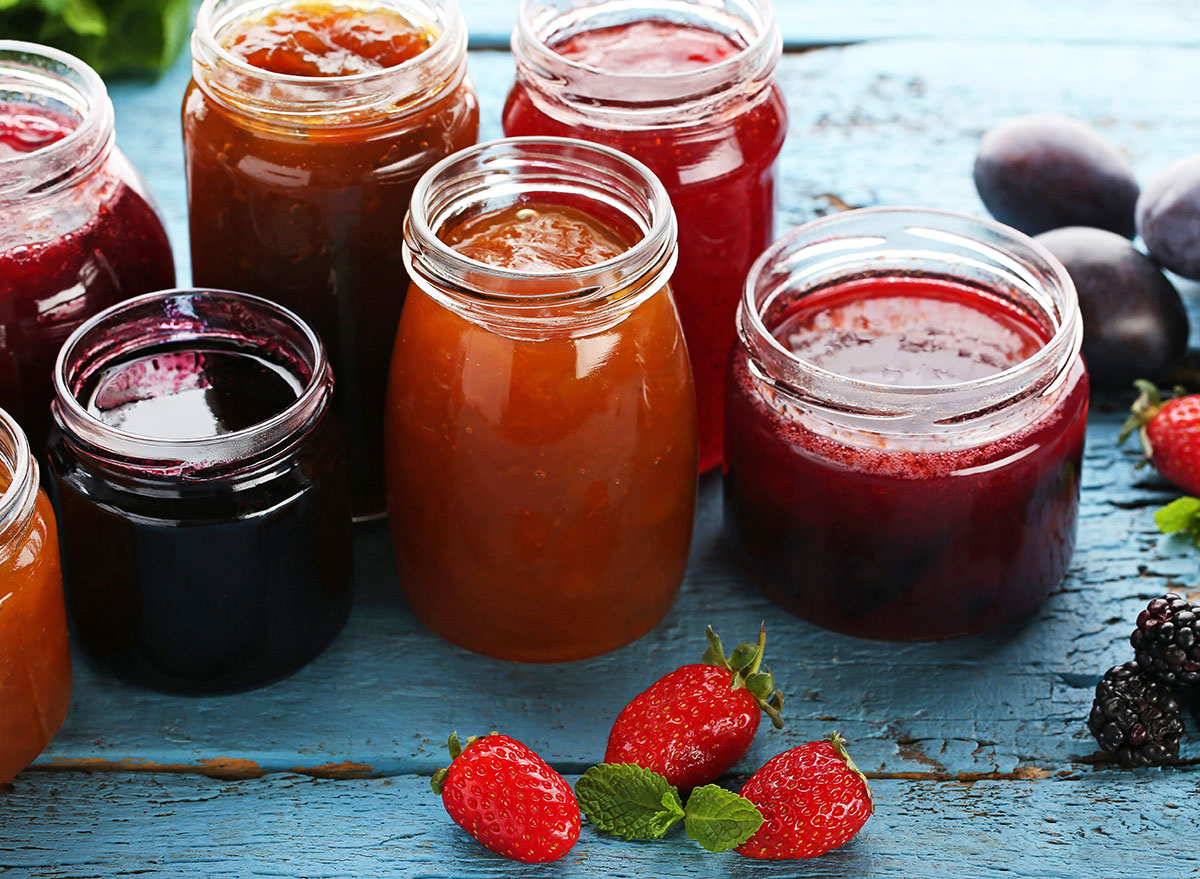
Jam and jelly is a double-whammy for people with diabetes. It's just a sugar that is spread on another refined carbohydrate like bread or crackers, Anziani explains, and are usually devoid of any and all nutrition. "[Using jelly and jam] is just a way of adding more sugar to something that already contains sugar," she says.
Honey
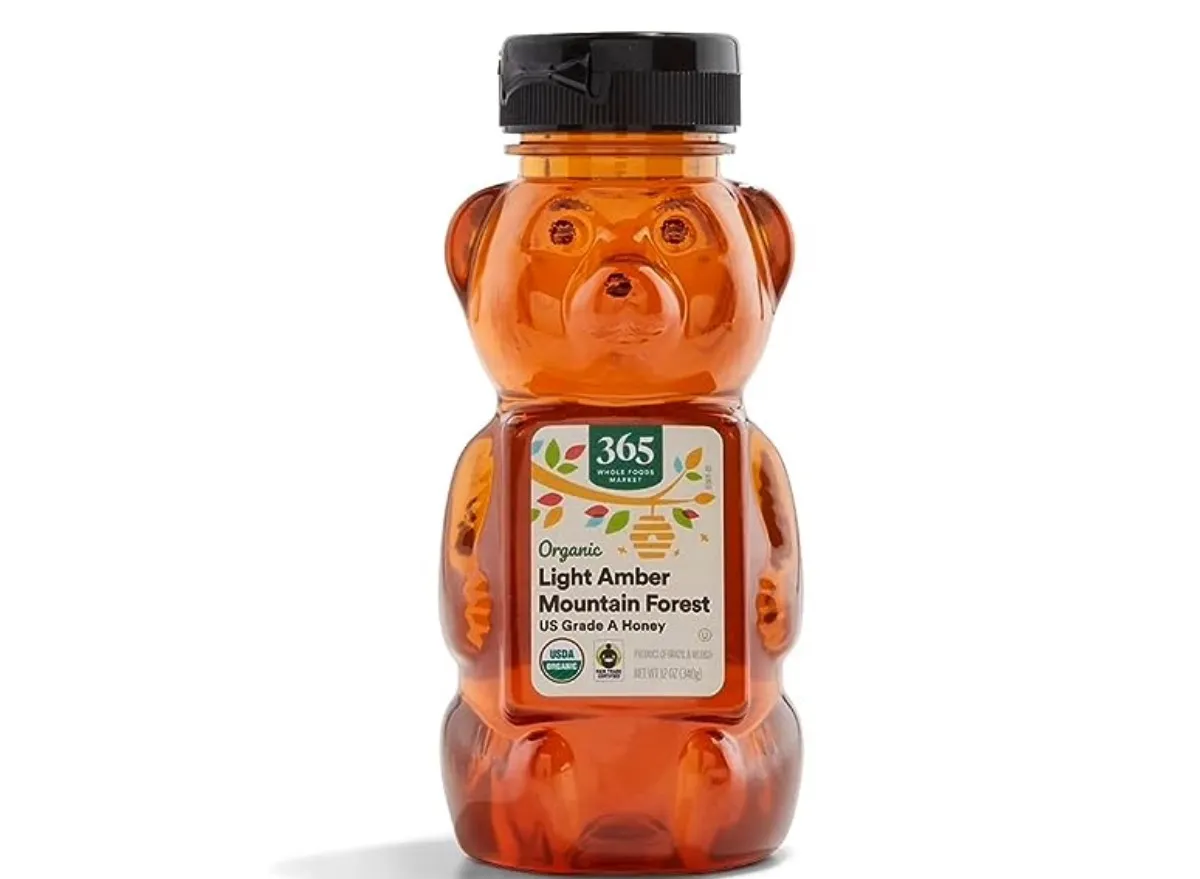
Don't be fooled by the fact that honey is "all-natural." It's still pure fructose, which is a sugar Anziani says. It will spike blood sugar just like regular sugar will, and is still processed in the liver.
Sweetened Cereals
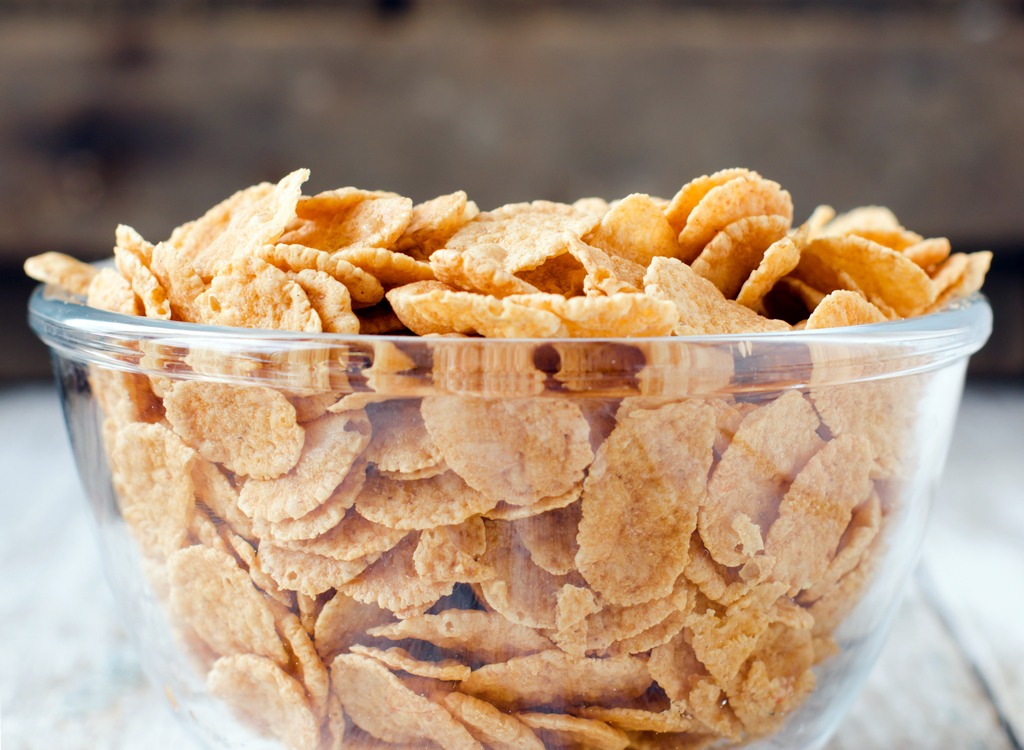
Sure, cereal is a convenient breakfast option. But even so-called "healthy" cereals can be dangerous for diabetics. They're usually packed with carbohydrates, but not much fiber or protein, which is essential for a filling and satisfying breakfast. Not to mention the sugary cereals that can have more sugar than candy per serving. Instead, opt for a more satiating breakfast, such as eggs, sauteed greens, and a serving of avocado.
Pop-Tarts
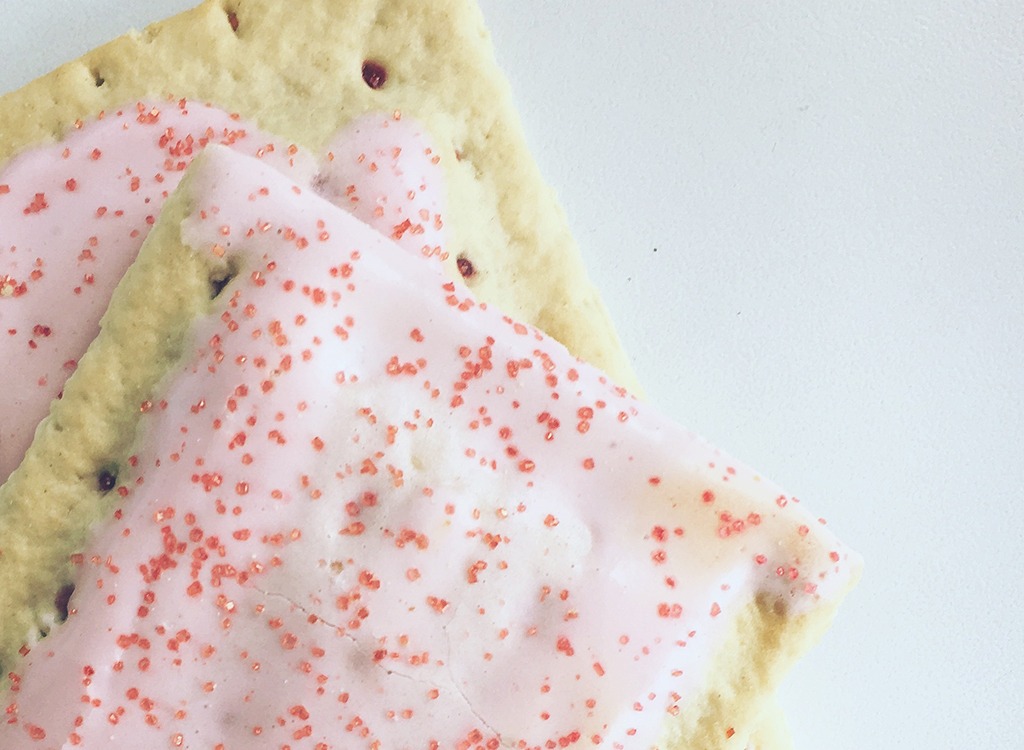
Pop-Tarts are nothing more than packaged and processed pastries. They're made with artificial refined flour and a "sugar square," as Anziani says, which will start your day with excess blood sugar.
Chocolate Milk
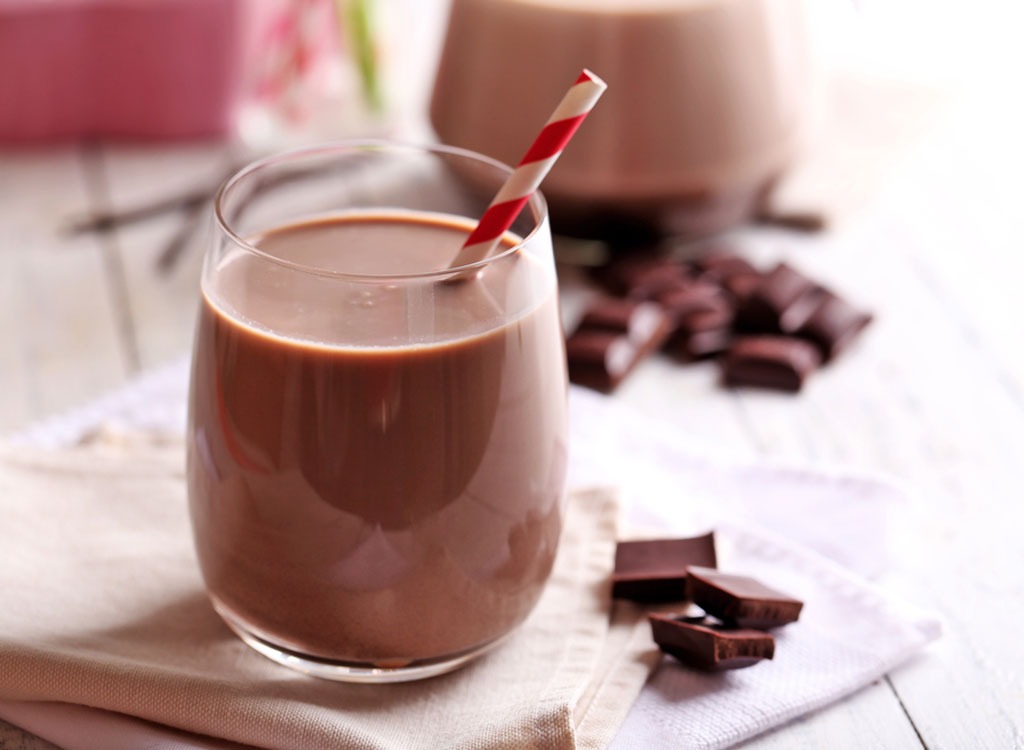
Chocolate milk can be a good post-workout recovery drink, but not for diabetics. "[Chocolate milk] includes the carbohydrate of milk, lactose, plus the added sugar from the chocolate mix to create a double whammy of blood sugar spike," Anziani says.
Popcorn
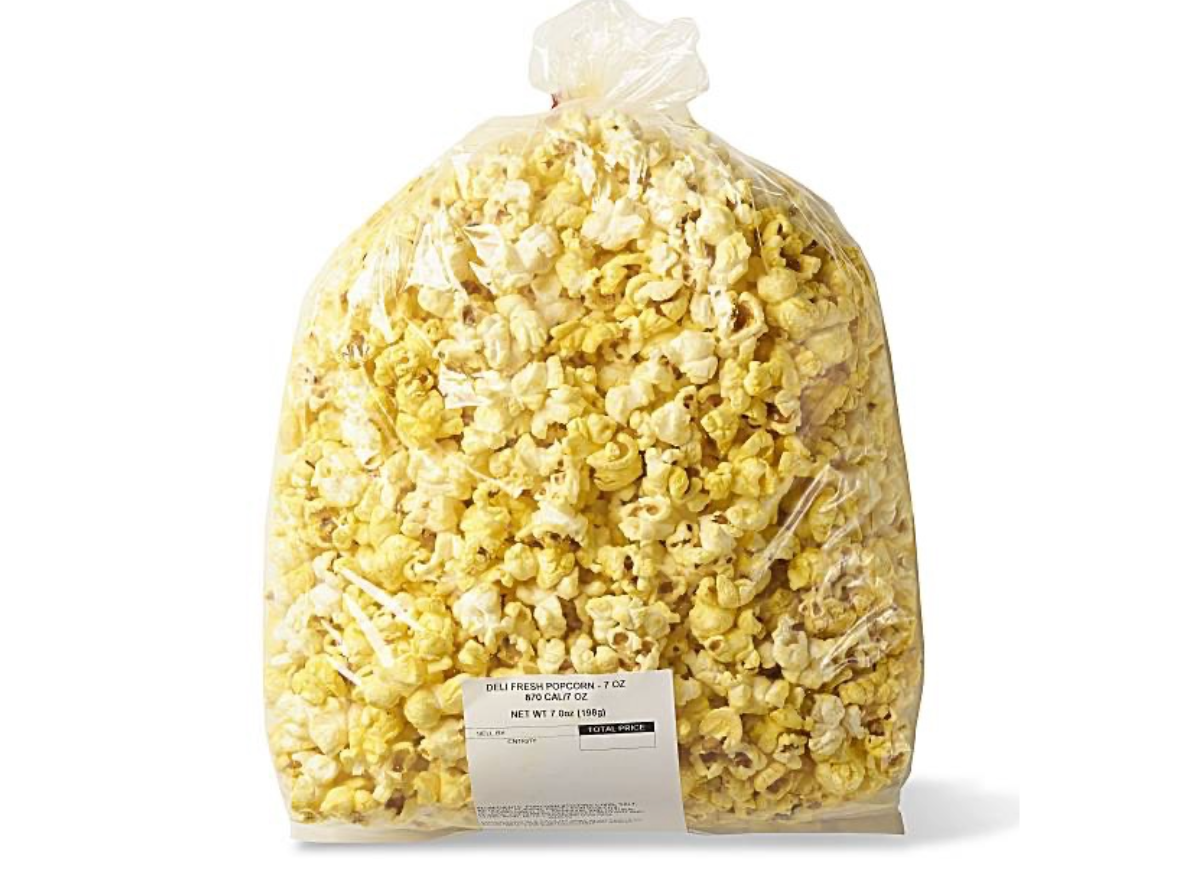
"Though its base is corn, corn is highly glycemic and this snack is usually topped with artificial butter topping, caramel sauce, or more unhealthy items," Anziani says. And yes, even stovetop popcorn is still a carbohydrate-ridden snack.
Packaged Baked Goods
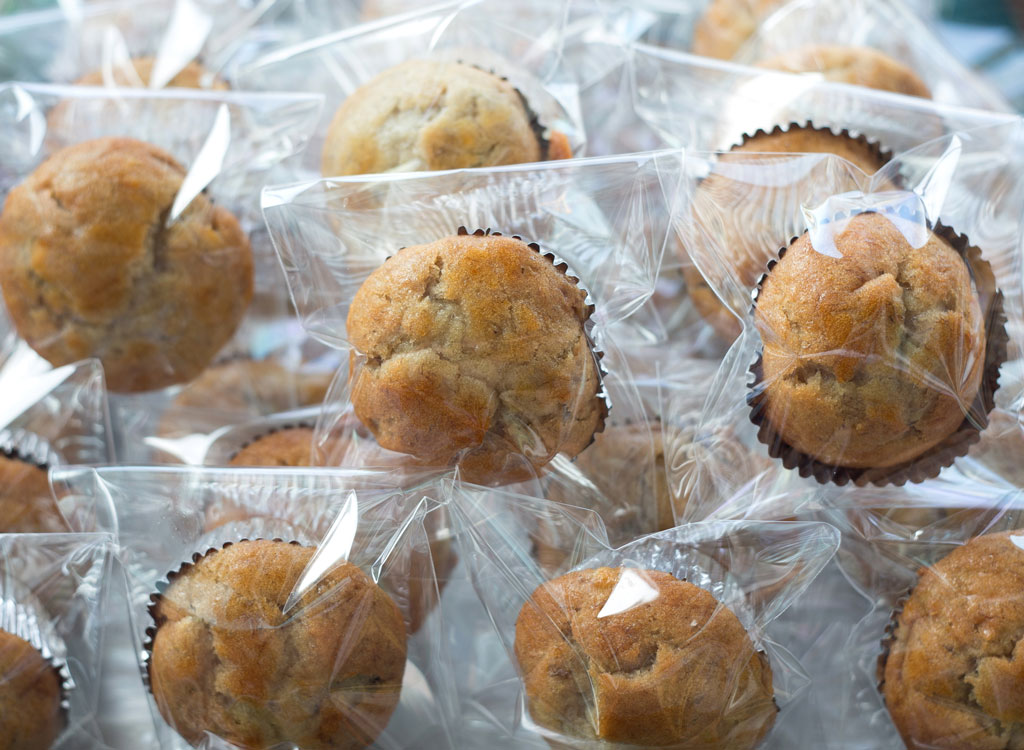
Packaged baked good contain tons of added sugar, usually in more than one form: sugar, high fructose corn syrup, and dextrose, to name a few. They're also packed with artificial ingredients and made with partially hydrogenated oils, which are inflammatory trans fats, Anziani says. These processed sweets will spike blood sugar and lead to inflammation.
Ice Cream
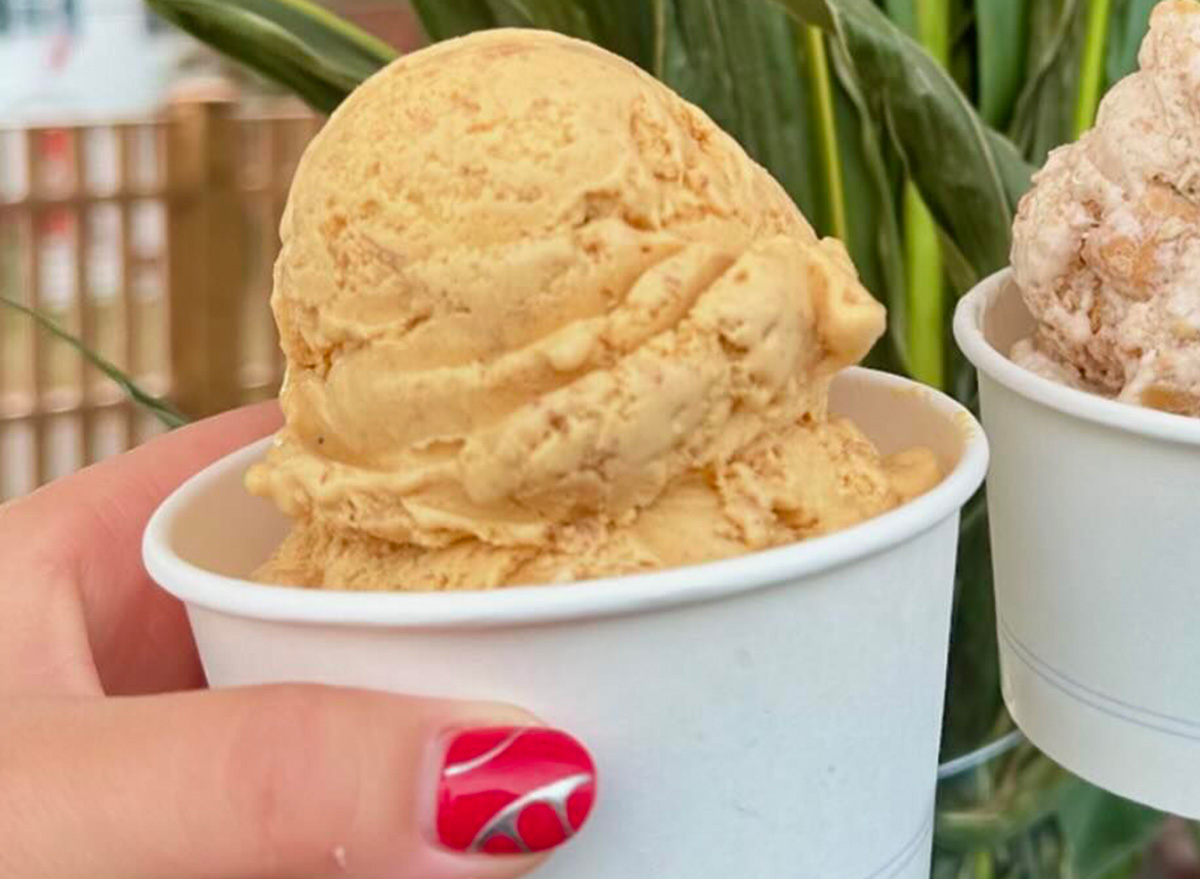
Aside from all the sugar, ice cream is usually packed with artery-clogging saturated fat. It can also be a problem for people who mindlessly eat. Ice cream "activates pleasure centers of the brain, blows out dopamine receptors, [and leaves you] wanting more and more," Anziani says. "Many will eat the whole container."
Chocolate Hazelnut Butter
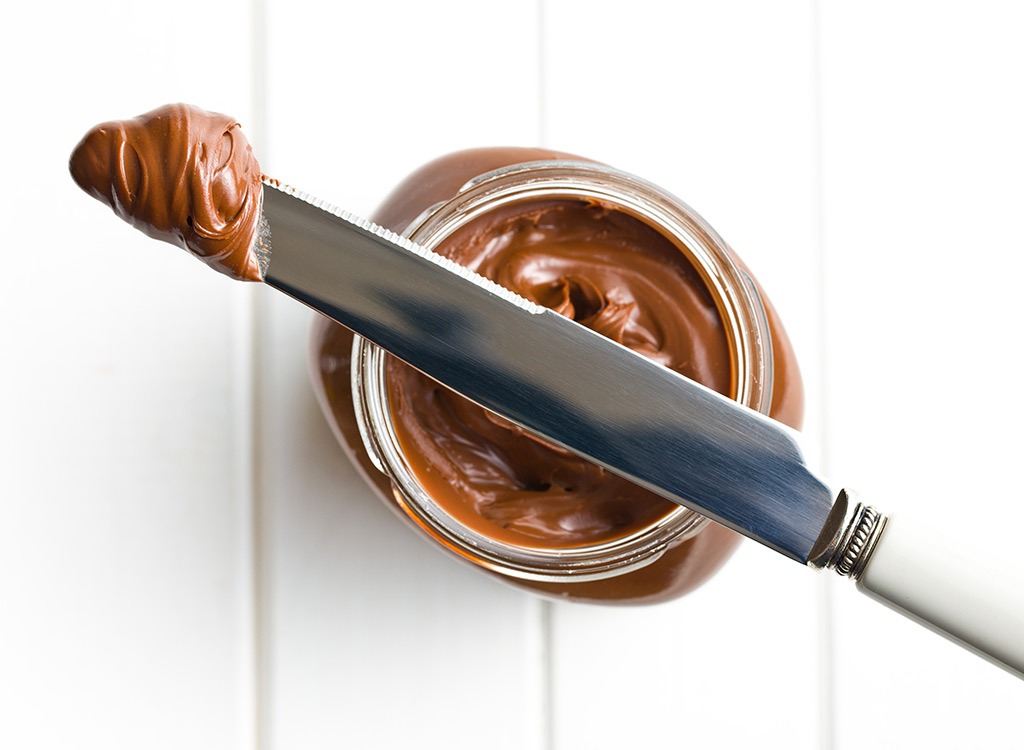
"While you'll find chocolate hazelnut butter amidst the other nut butters in the grocery store, it is not the best choice for those living with diabetes. Sugar and palm oil are the first, and most prevalent, ingredients instead of hazelnuts, which can promote high blood sugar and inflammation," Jenna Braddock, RDN, CSSD, sports dietitian and blogger at MakeHealthyEasy.com, explains. "The protein content is also really low at 2 grams per 2 tablespoons. If you just love this food, look for a brand where hazelnuts are the first ingredient and sugar is as low as possible. Another alternative is other nut butters where cocoa is added without additional sugar."
